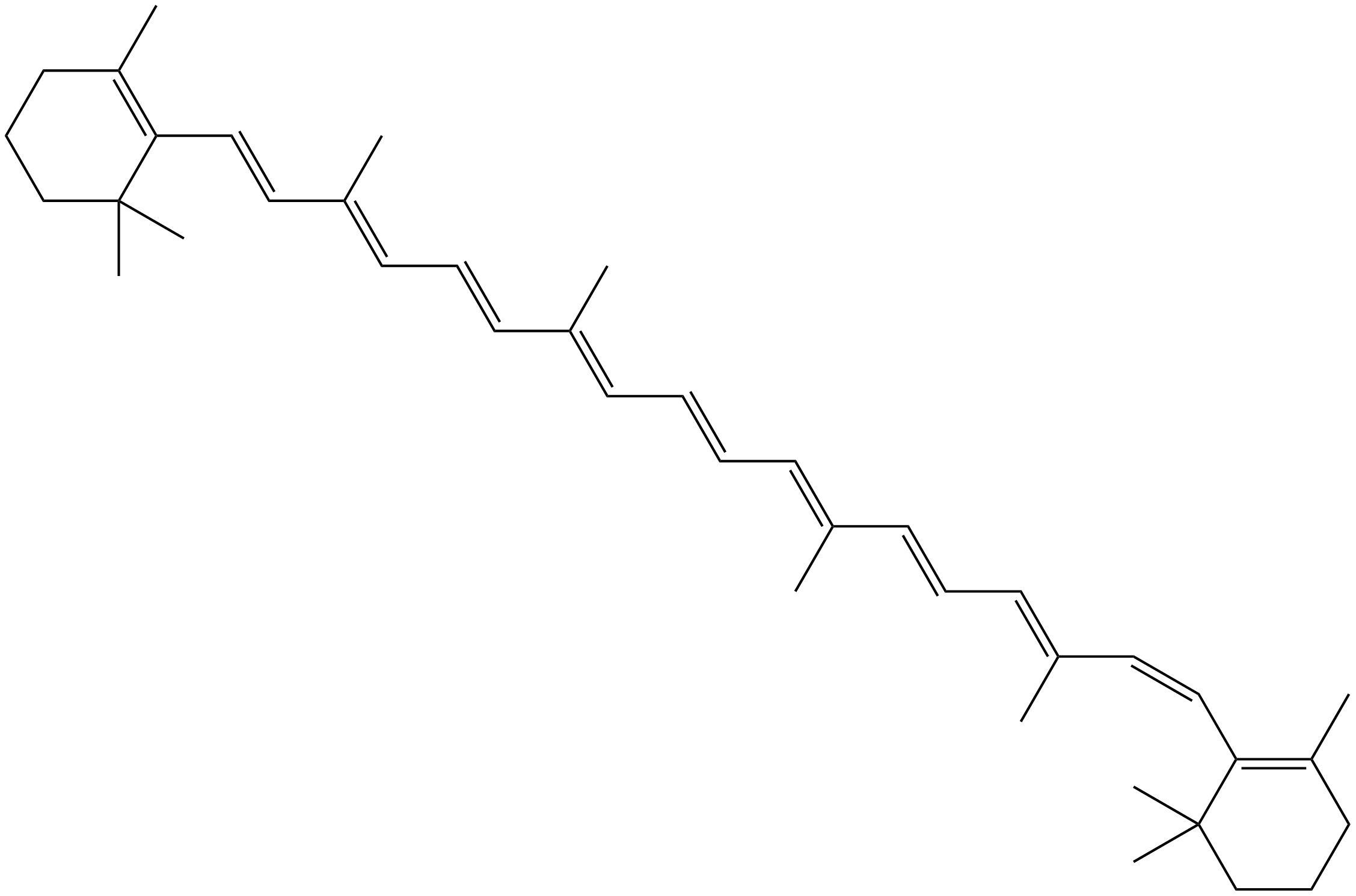Proteases
Proteases is a general term for a class of enzymes that hydrolyze protein peptide chains. According to the way they degrade polypeptides, they are divided into two categories: endopeptidases and telopeptidases. The former can cut the large molecular weight polypeptide chain from the middle to form prions and peptones with smaller molecular weights; the latter can be divided into carboxypeptidase and aminopeptidase, which respectively remove the peptide from the free carboxyl terminus or free amino terminus of the polypeptide one by one. Chain hydrolysis produces amino acids.
A general term for a class of enzymes that hydrolyze peptide bonds in proteins. According to the way they hydrolyze polypeptides, they can be divided into endopeptidases and exopeptidases. Endopeptidase cleaves the interior of the protein molecule to form smaller molecular weight peptones and peptones. Exopeptidase hydrolyzes peptide bonds one by one from the end of the free amino group or carboxyl group of protein molecules, and frees amino acids, the former is aminopeptidase and the latter is carboxypeptidase. Proteases can be classified into serine proteases, sulfhydryl proteases, metalloproteases and aspartic proteases according to their active centers and optimum pH. According to the optimum pH value of its reaction, it is divided into acidic protease, neutral protease and alkaline protease. The proteases used in industrial production are mainly endopeptidases.
Proteases are widely found in animal offal, plant stems and leaves, fruits and microorganisms. Microbial proteases are mainly produced by molds and bacteria, followed by yeast and actinomycetes.
Enzymes that catalyze the hydrolysis of proteins. There are many kinds, the important ones are pepsin, trypsin, cathepsin, papain and subtilisin. Proteases have strict selectivity for the reaction substrates they act on. A protease can only act on certain peptide bonds in protein molecules, such as the peptide bonds formed by the hydrolysis of basic amino acids catalyzed by trypsin. Proteases are widely distributed, mainly in the digestive tract of humans and animals, and are abundant in plants and microorganisms. Due to limited animal and plant resources, the industrial production of protease preparations is mainly prepared by fermentation of microorganisms such as Bacillus subtilis and Aspergillus terrestris.
Targets for Proteases
- Caspase(88)
- Aminopeptidase(19)
- ACE(69)
- Calpains(11)
- Carboxypeptidase(8)
- Cathepsin(68)
- DPP-4(18)
- Elastase(23)
- Gamma Secretase(46)
- HCV Protease(35)
- HSP(95)
- HIV Integrase(29)
- HIV Protease(32)
- MMP(199)
- NS3/4a protease(4)
- Serine Protease(11)
- Thrombin(46)
- Urokinase(2)
- Cysteine Protease(0)
- Other Proteases(15)
- Tyrosinases(44)
- 15-PGDH(1)
- Acetyl-CoA Carboxylase(13)
- Acyltransferase(53)
- Aldehyde Dehydrogenase (ALDH)(27)
- Aminoacyl-tRNA Synthetase(9)
- ATGL(1)
- Dipeptidyl Peptidase(47)
- Drug Metabolite(453)
- E1/E2/E3 Enzyme(82)
- Endogenous Metabolite(1555)
- FABP(30)
- Farnesyl Transferase(21)
- Glutaminase(14)
- Glutathione Peroxidase(14)
- Isocitrate Dehydrogenase (IDH)(26)
- Lactate Dehydrogenase(17)
- Lipoxygenase(231)
- Mitochondrial Metabolism(201)
- NEDD8-activating Enzyme(6)
- Neprilysin(12)
- PAI-1(12)
- Ser/Thr Protease(40)
- Tryptophan Hydroxylase(11)
- Xanthine Oxidase(16)
- MALT1(10)
- PCSK9(1)
Products for Proteases
- Cat.No. Nom du produit Informations
-
GC31725
Arachidonic acid (Immunocytophyt)
Single-Use AA (peroxide free)
L'acide arachidonique (Immunocytophyt) est un acide gras essentiel et un constituant majeur des biomembranes.
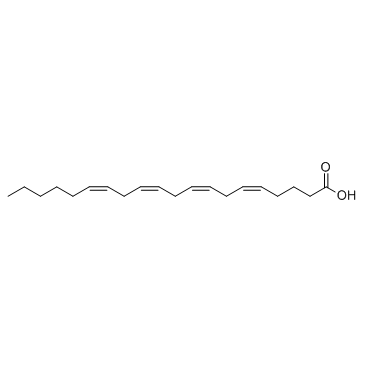
-
GC67243
Arachidonoyl coenzyme A lithium
L'arachidonoyl coenzyme A lithium est un acyle gras coenzyme A insaturé, formé par la condensation du groupe thiol de la coenzyme A avec le groupe carboxyle de l'acide arachidonique.
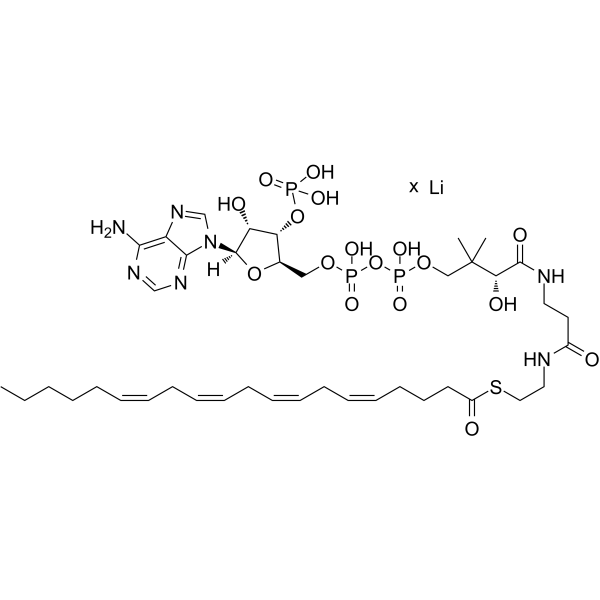
-
GC42846
Arachidonoyl-L-carnitine (chloride)
C20:4 Carnitine
Carnitine facilitates the transport of fatty acids into the mitochondria to be used in fatty acid metabolism.
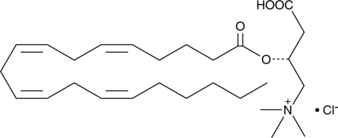
-
GN10073
Arbutin
β-Arbutin, NSC 4036
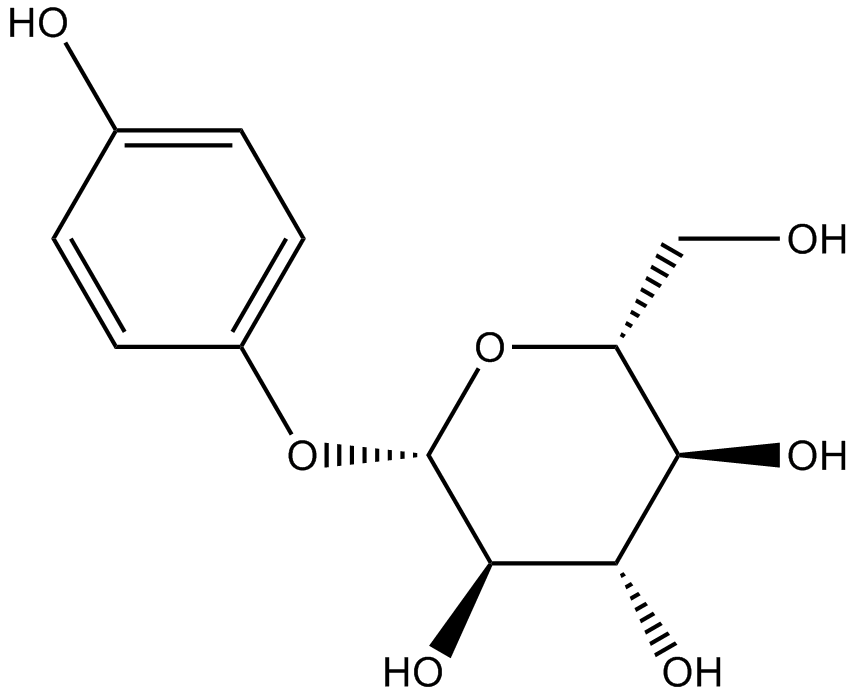
-
GN10063
Arctigenin
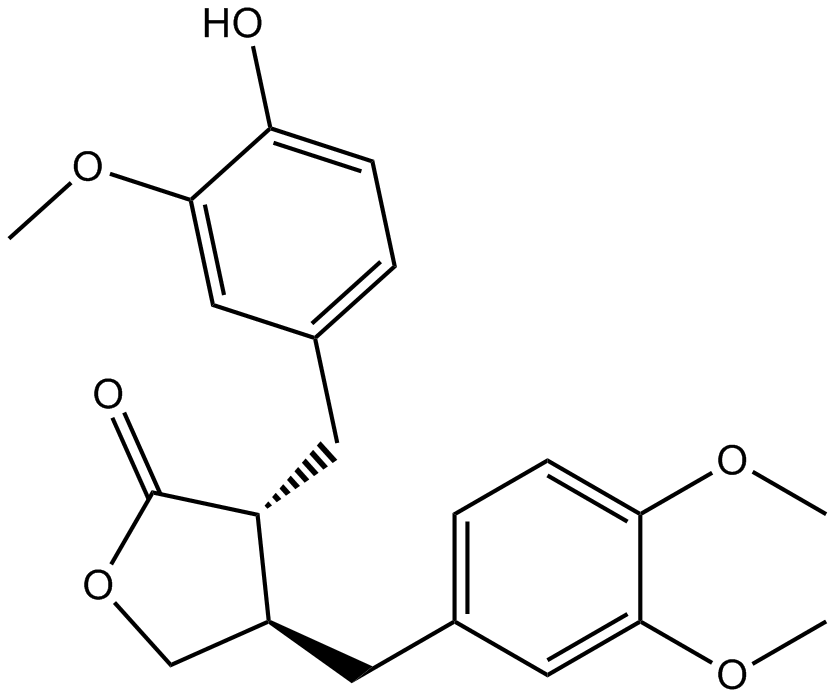
-
GC30293
Arg-AMS
Arg-AMS est un puissant inhibiteur nanomolaire de l'arginyl ARNt synthétase, qui présente des caractéristiques inhibitrices étroitement liées pour les domaines A dans les enzymes de synthétases de peptides non ribosomiques (NRPS).
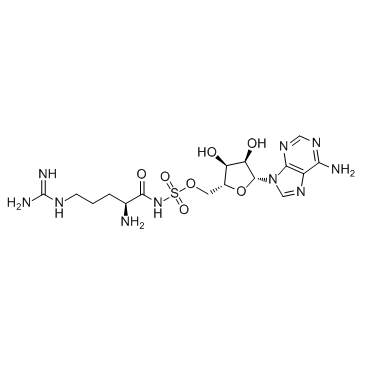
-
GC11672
Argatroban
Novastan; Argatrobanum
L'argatroban (MD-805) est un inhibiteur direct et sélectif de la thrombine.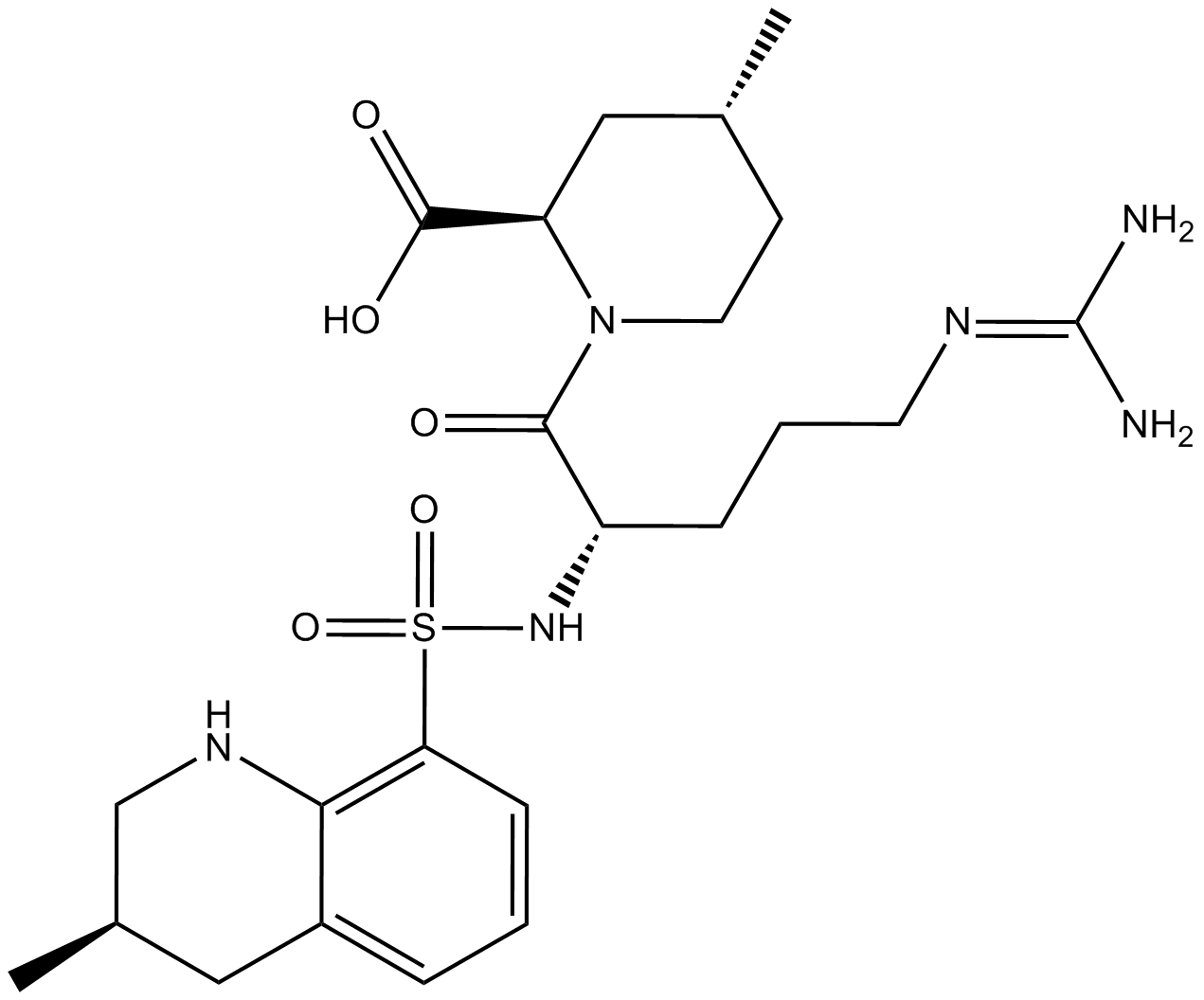
-
GC35384
Argatroban monohydrate
L'argatroban (monohydrate) (MD-805 (monohydrate)) est un inhibiteur direct et sélectif de la thrombine.
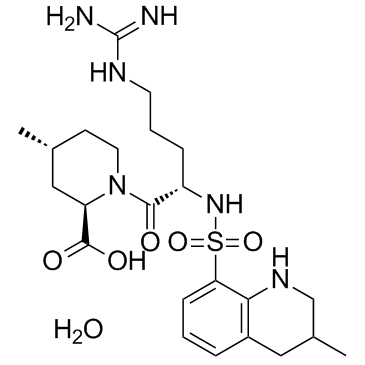
-
GC30675
Argininic acid
L'acide arginique est un acide α-aminé utilisé dans la biosynthèse des protéines.
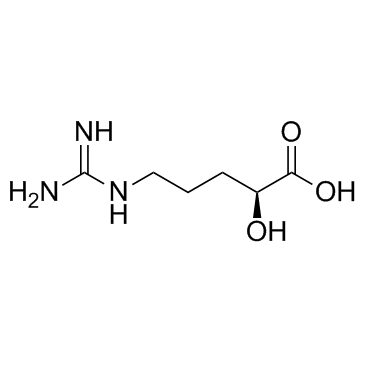
-
GC31103
Arimoclomol maleate (BRX-220)
BRX-220
Le maléate d'arimoclomol (BRX-220) (BRX-220) est un co-inducteur des protéines de choc thermique (HSP).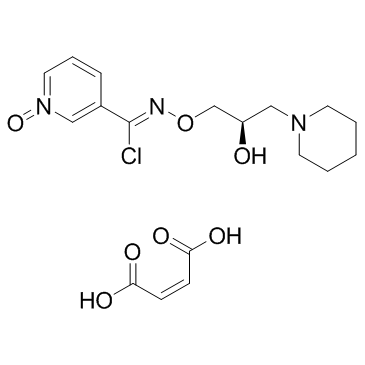
-
GC52168
Aripiprazole N,N-dioxide

-
GC52024
Aripiprazole N-oxide
Aripiprazole N1-Oxide
A metabolite of aripiprazole
-
GC35388
Aristolactam I
L'aristololactame I (AL-I), est le principal métabolite de l'acide aristolochique I (AA-I), participe aux processus qui conduisent À des lésions rénales.
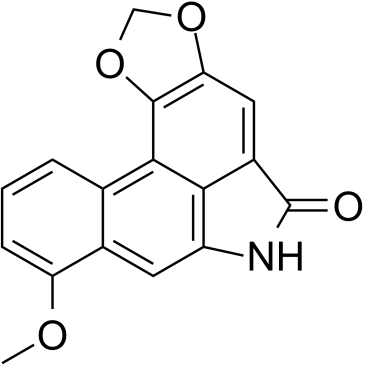
-
GC35395
Arnicolide D
ARD
L'arnicolide D est une lactone sesquiterpénique isolée de Centipeda minima. L'arnicolide D module le cycle cellulaire, active la voie de signalisation des caspases et inhibe les voies de signalisation PI3K/AKT/mTOR et STAT3. L'arnicolide D inhibe la viabilité des cellules du carcinome du nasopharynx (NPC) en fonction de la concentration et du temps.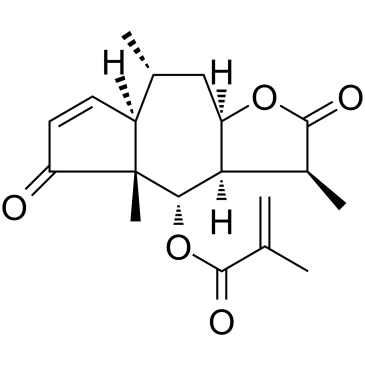
-
GC13487
ARP 100
CAY10609, Matrix Metalloproteinase-2 Inhibitor III, MMP2 Inhibitor III
A selective inhibitor of MMP-2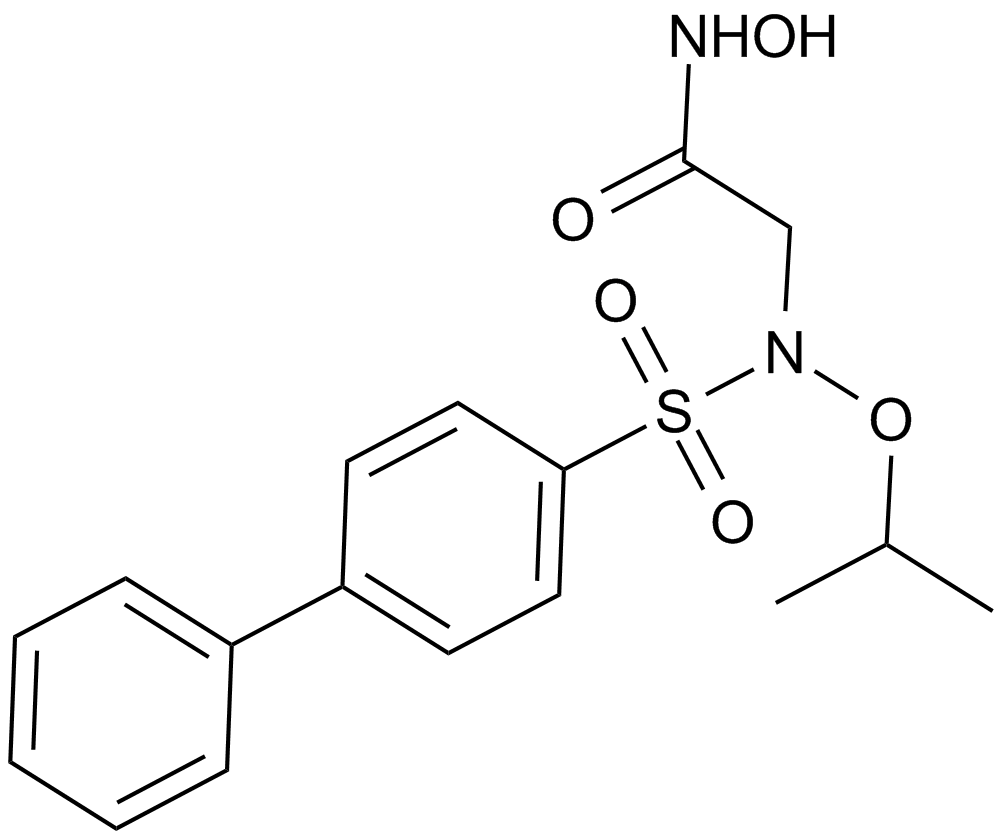
-
GC12465
ARP 101
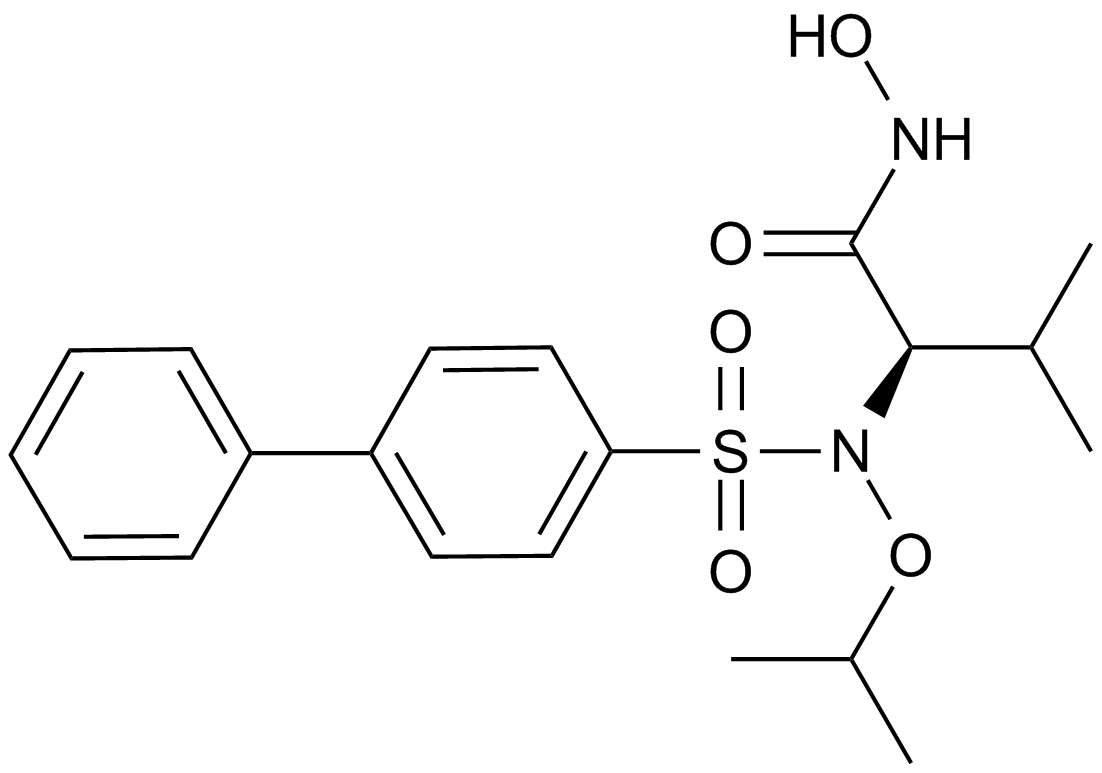
-
GC16829
Arphamenine B (hemisulfate)
aminopeptidase B inhibitor
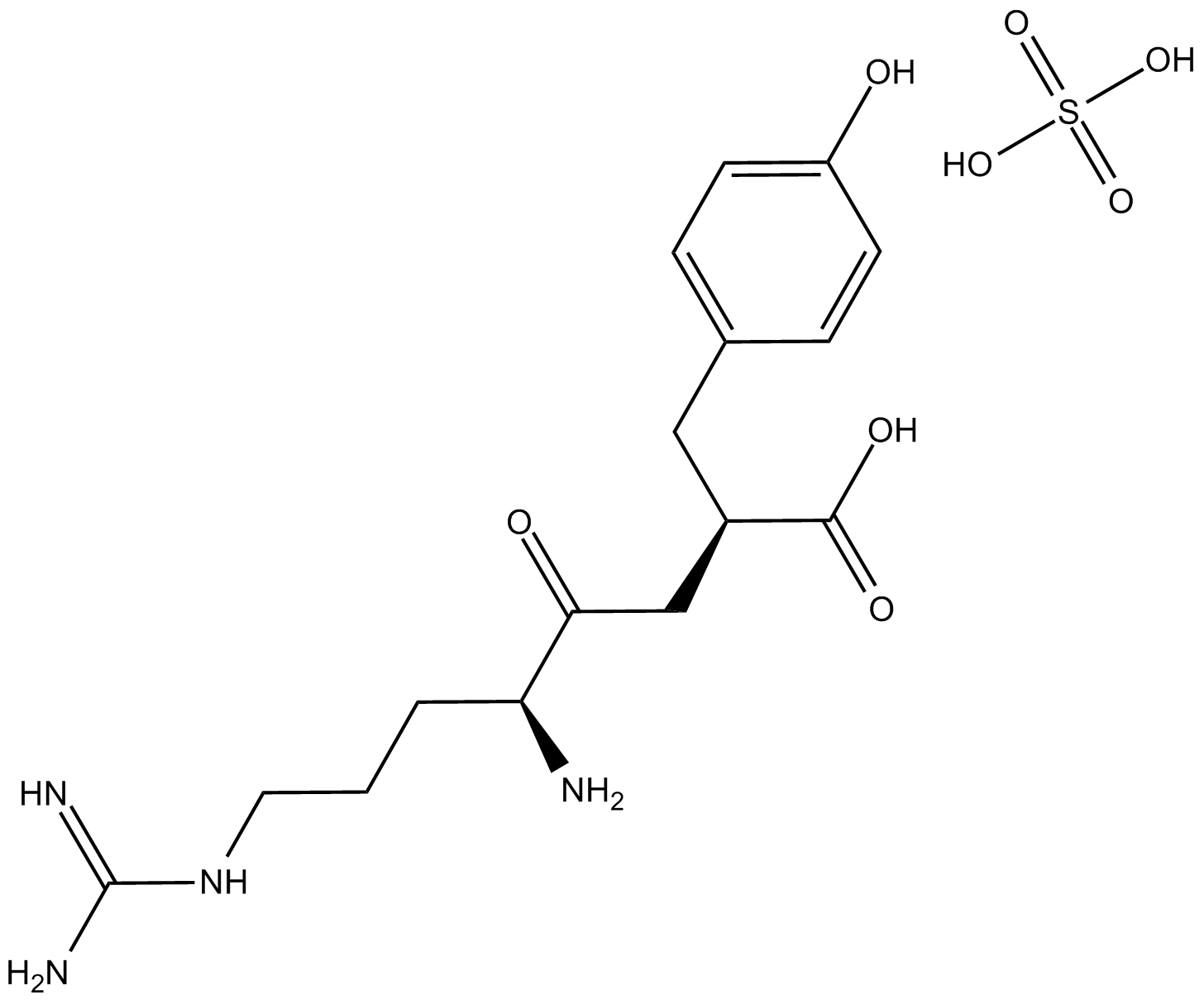
-
GC46883
AS-2077715
An inhibitor of fungal complex III
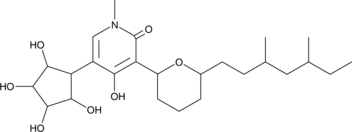
-
GC68302
AS-Inclisiran
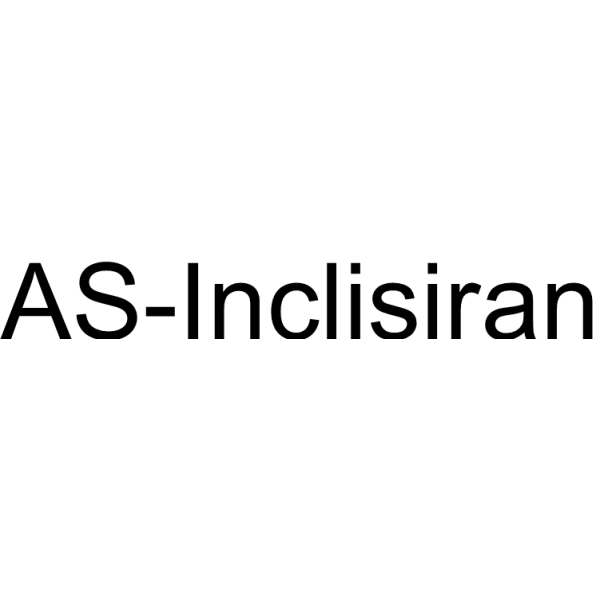
-
GC38463
ASLAN003
ASLAN003
ASLAN003 (ASLAN003) est un puissant inhibiteur de la dihydroorotate déshydrogénase (DHODH) actif par voie orale avec une IC50 de 35 nM pour l'enzyme DHODH humaine. ASLAN003 inhibe la synthèse des protéines via l'activation des facteurs de transcription AP-1. ASLAN003 induit l'apoptose et prolonge considérablement la survie des souris xénogreffes atteintes de leucémie myéloÏde aiguë (LMA).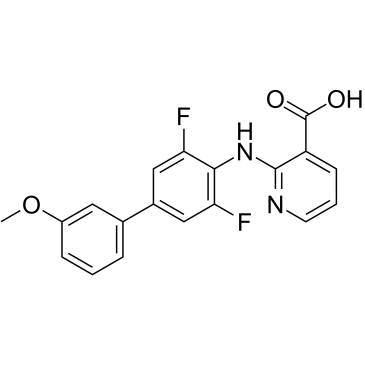
-
GC31432
Asp-AMS
Asp-AMS, un analogue de l'aspartyl-adényle, est un inhibiteur de l'aspartyl-ARNt synthétase et également un fort inhibiteur compétitif de l'enzyme mitochondriale.
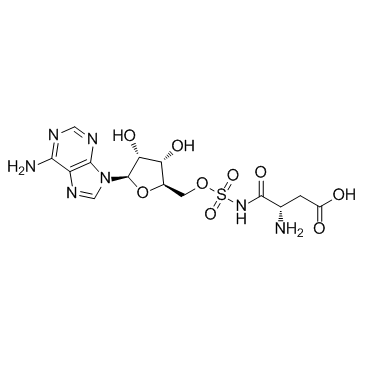
-
GC46885
Asperglaucide
Aurantiamide Acetate
An amide with diverse biological activities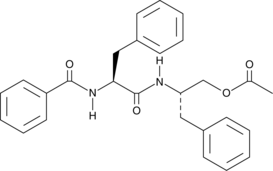
-
GC60603
Asperosaponin VI
Akebia Saponin D, ASA VI, Leiyemudanoside A, Tauroside St-G0-1
A triterpenoid saponin with diverse biological activities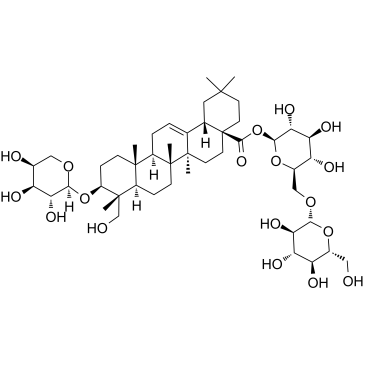
-
GC40769
Asperphenamate
Anabellamide, Auranamide, NSC 306231
L'asperphénamate, un métabolite fongique d'Aspergillus flatiipes À effet anticancéreux, présente des valeurs d'IC50 de 92,3 μM, 96,5 μM et 97,9 μM dans les cellules T47D, MDA-MB-231 et HL-60, respectivement.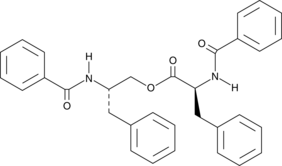
-
GC62481
AST5902 trimesylate
Le trimésylate d'AST5902 est le principal métabolite de l'alflutinib (AST2818) À la fois in vitro et in vivo. Le trimésylate d'AST5902 exerce une activité antinéoplasique. L'alflutinib est un inhibiteur de l'EGFR.

-
GN10494
Astragaloside IV
AS-IV, AST-IV
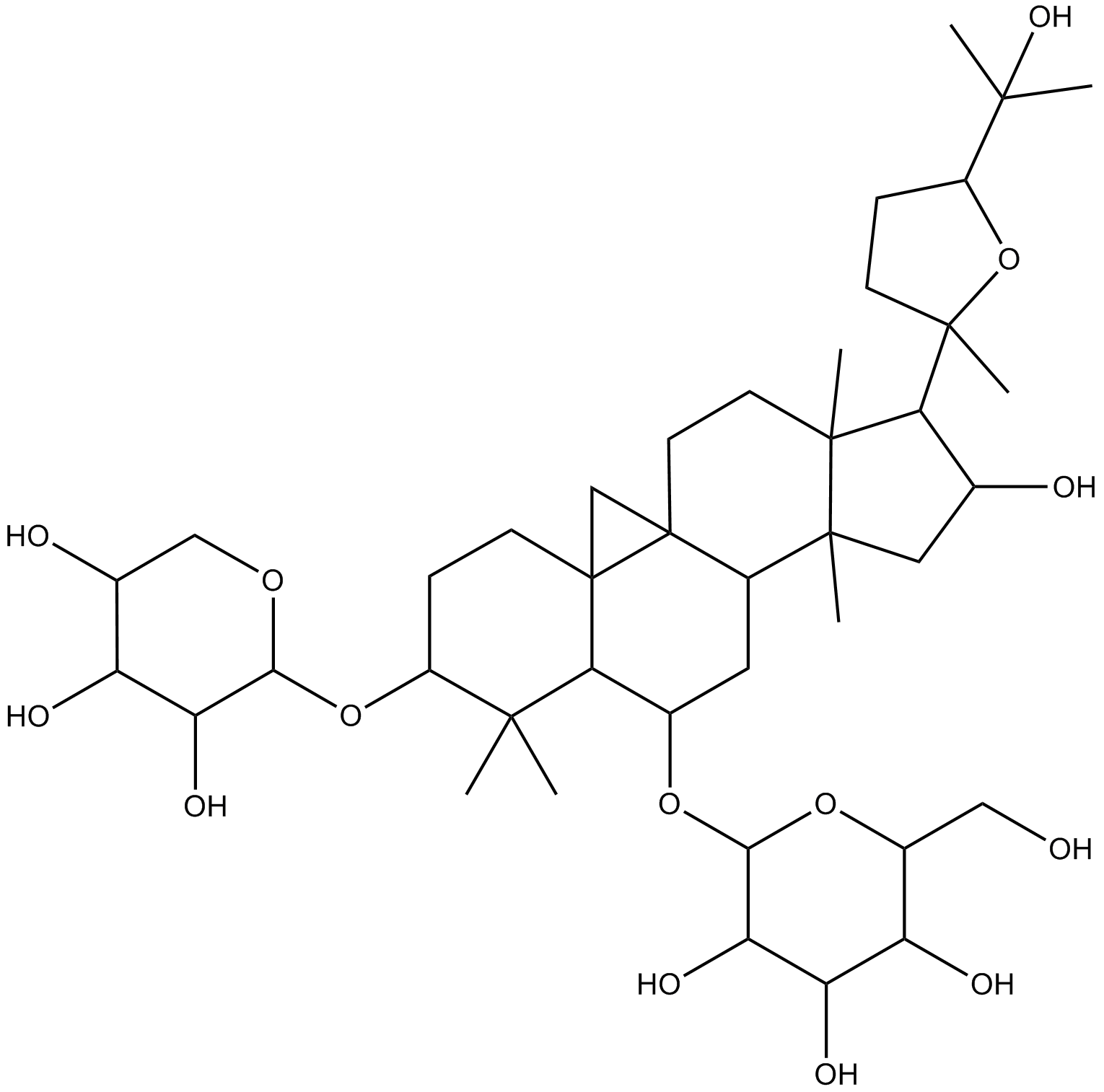
-
GC14458
Asunaprevir (BMS-650032)
BMS 650032
An HCV NS3/4A protease inhibitor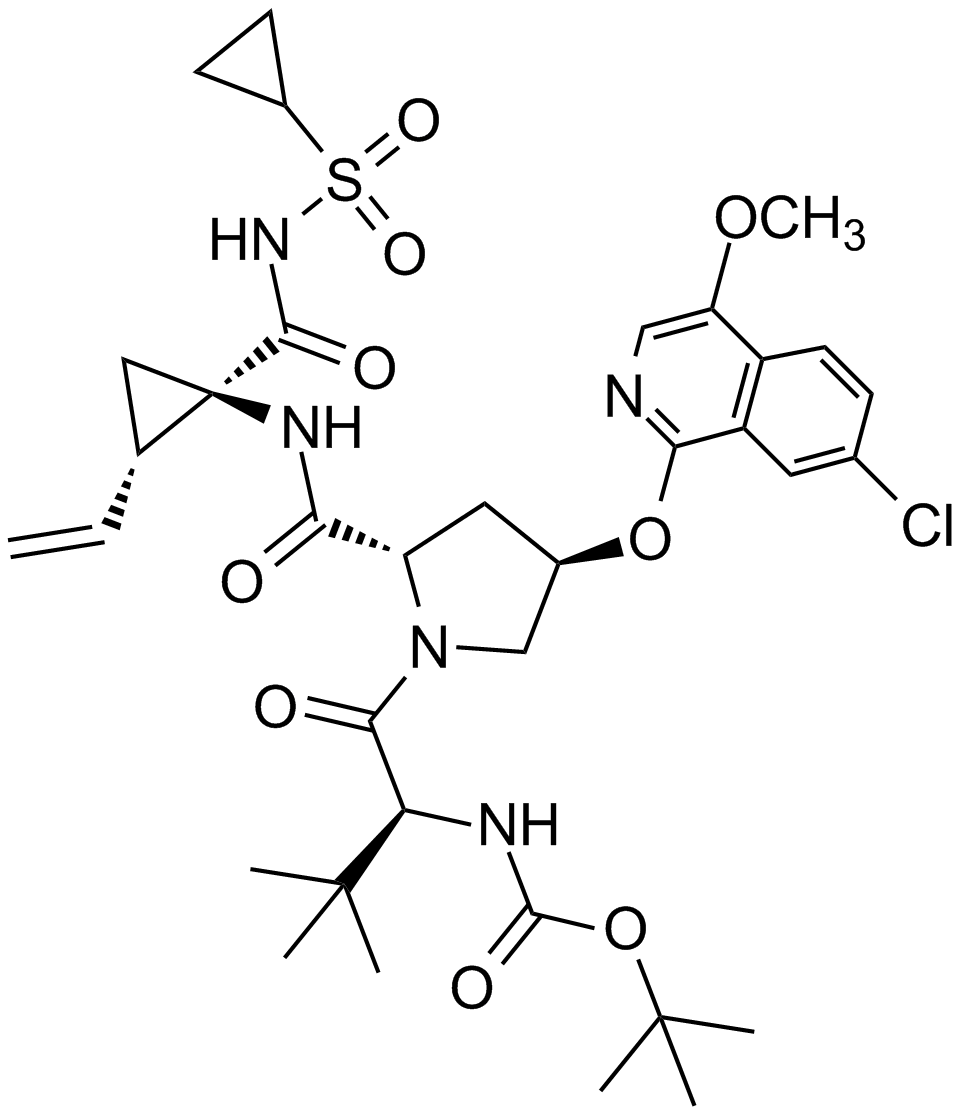
-
GC32457
Asymmetric dimethylarginine
ADMA, Asymmetric dimethylarginine
La diméthylarginine asymétrique est un inhibiteur endogène de l'oxyde nitrique synthase (NOS) et fonctionne comme un marqueur de la dysfonction endothéliale dans un certain nombre d'états pathologiques.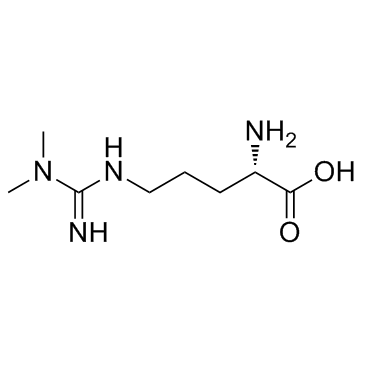
-
GC13414
AT13387
AT-13387
AT13387 (AT13387) est un inhibiteur de Hsp90 de deuxième génération À longue durée d'action avec un Kd de 0,71 nM.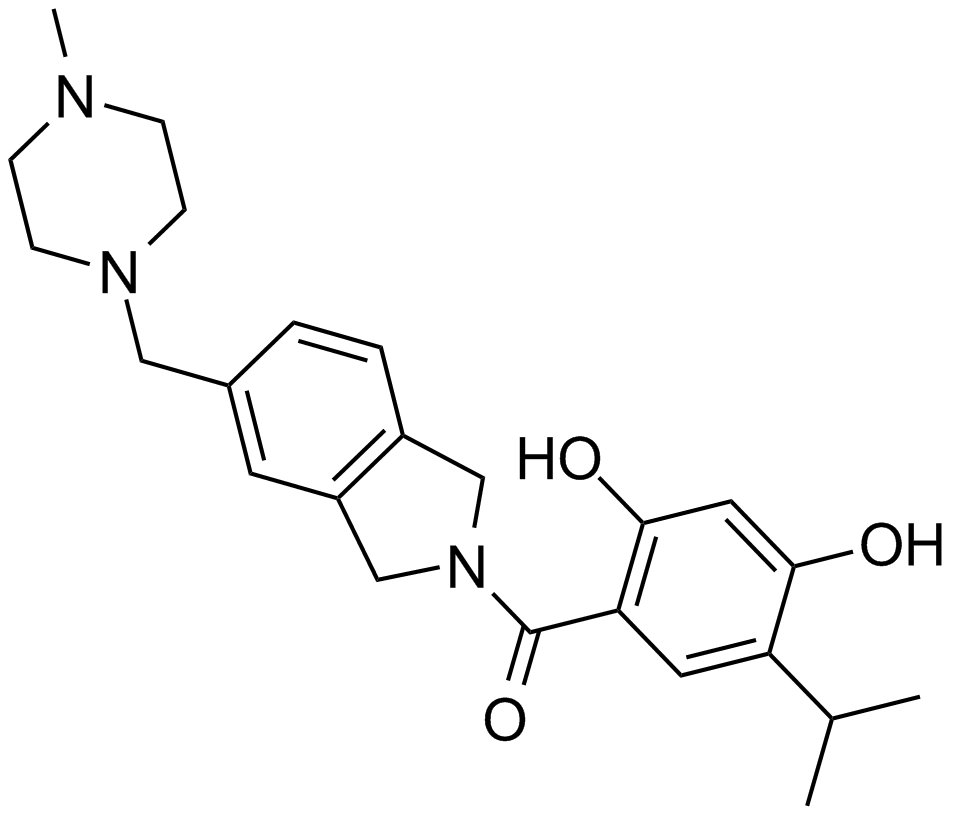
-
GC12945
Atazanavir
BMS 232632, CGP 73547
An inhibitor of HIV-1 protease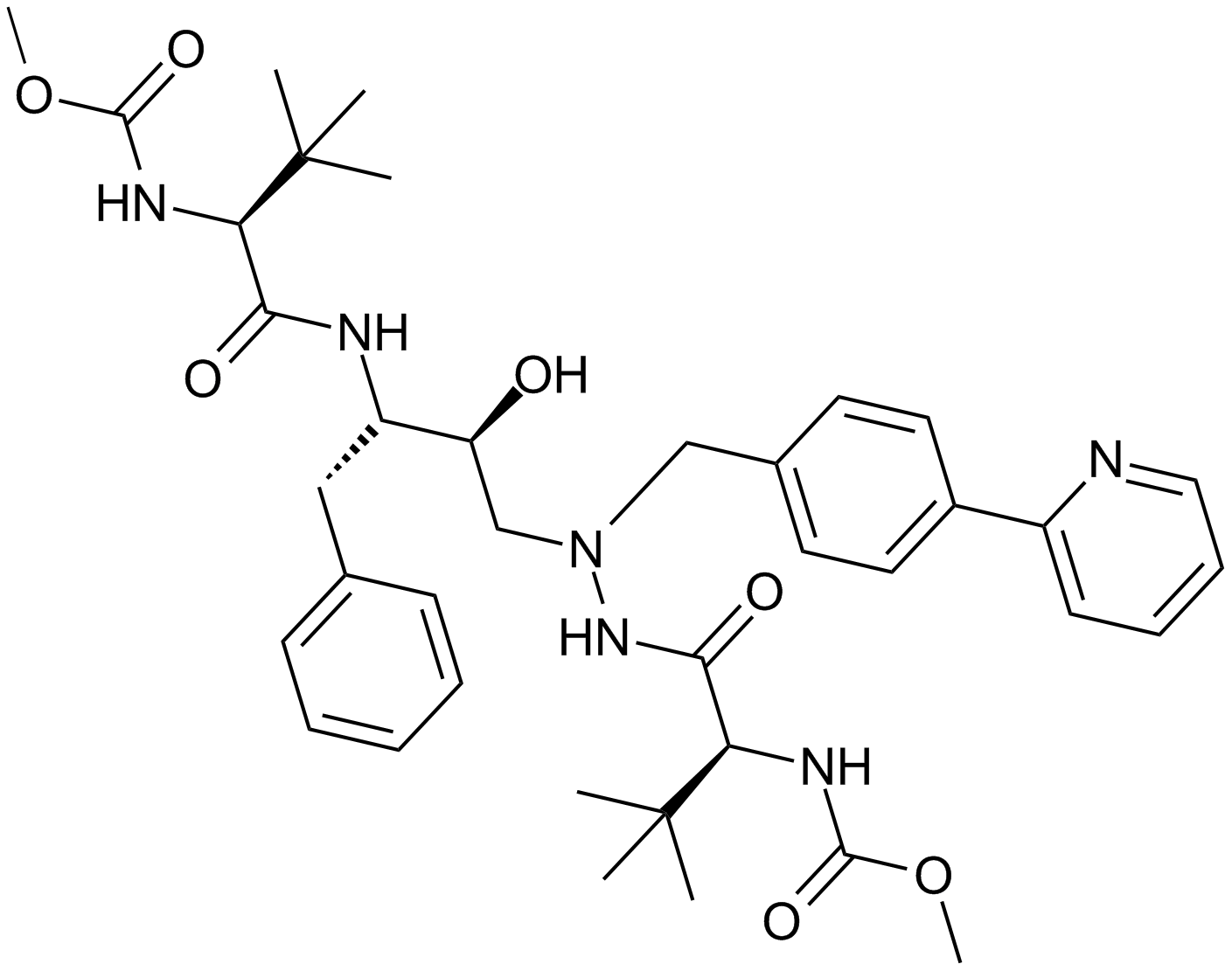
-
GC10240
Atazanavir sulfate (BMS-232632-05)
An inhibitor of HIV-1 protease
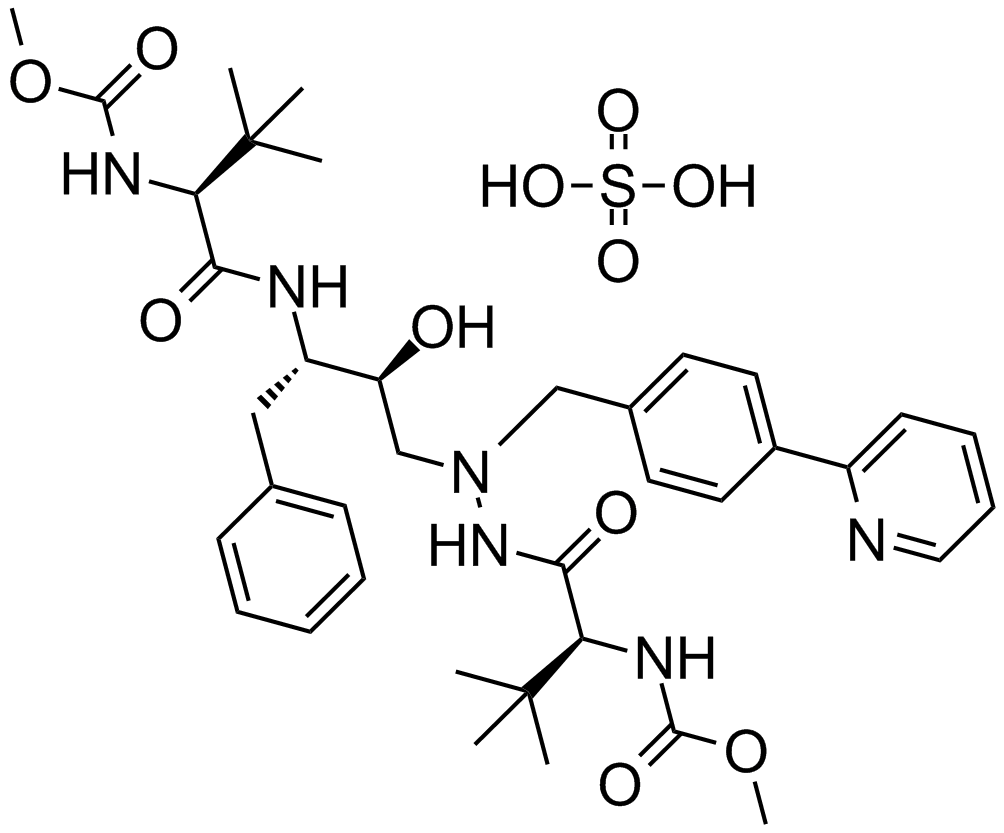
-
GC46887
Atazanavir-d6
An internal standard for the quantification of atazanavir
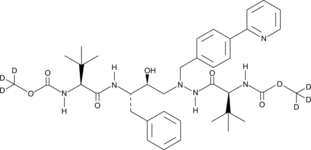
-
GC15770
Atglistatin
L'atglistatine est un inhibiteur sélectif de la lipase triglycéride adipeuse (ATGL) qui inhibe la lipolyse avec une IC50 de 0,7 μM in vitro.
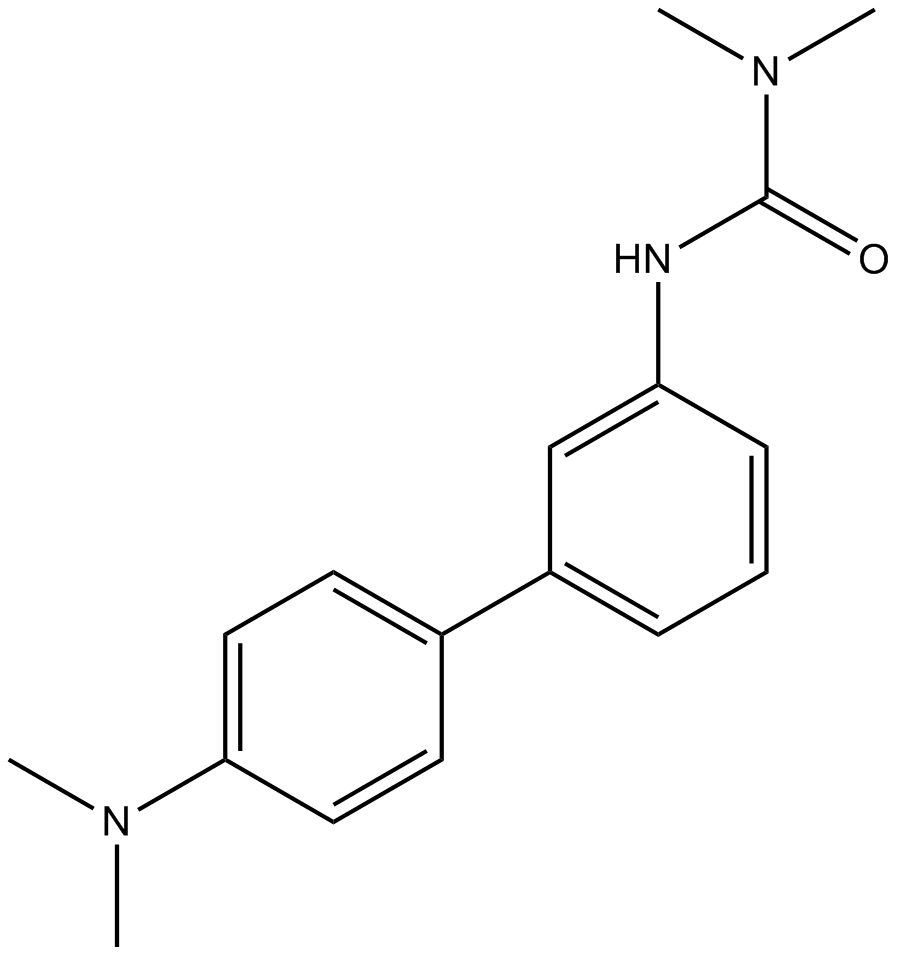
-
GC49421
Atorvastatin lactone-d5
An internal standard for the quantification of atorvastatin lactone
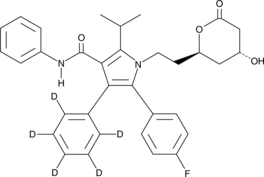
-
GC46890
Atorvastatin-d5 (calcium salt)
An internal standard for the quantification of atorvastatin
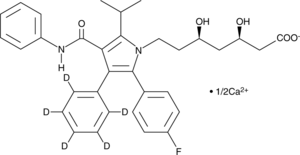
-
GC35420
ATP
L'ATP (adénosine 5'-triphosphate) est un élément central du stockage de l'énergie et du métabolisme in vivo.
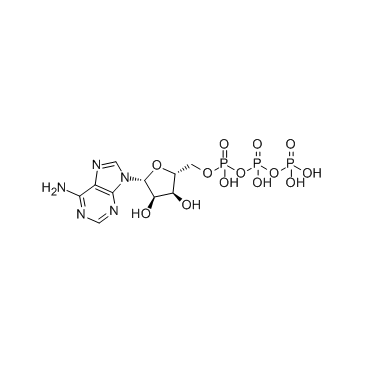
-
GC61448
ATP disodium trihydrate
L'ATP disodique trihydraté (adénosine 5'-triphosphate disodique trihydraté) est un composant central du stockage de l'énergie et du métabolisme in vivo.
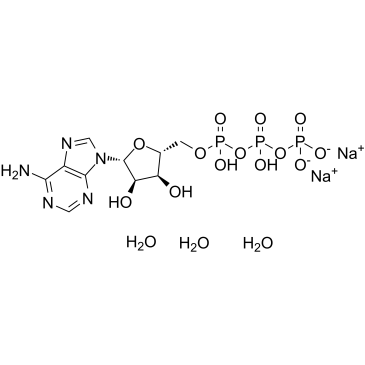
-
GC46893
Atranorin
NSC 87512, NSC 249980, NSC 685591
L'atranorine est un métabolite secondaire du lichen. L'atranorine inhibe la motilité et la tumorigenèse des cellules cancéreuses du poumon en affectant la signalisation AP-1, Wnt et STAT et en supprimant l'activité de la RhoGTPase.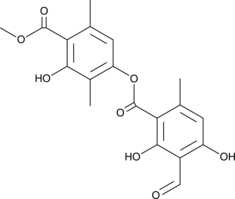
-
GC35425
Atreleuton
A-85761.0, ABT-761, VIA-2291
L'atreleuton (ABT-761) est un inhibiteur sélectif, réversible et biodisponible de la 5-lipoxygénase (5-LO).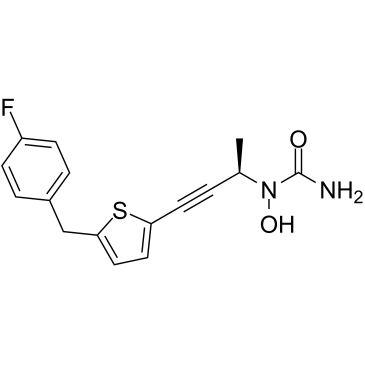
-
GC42873
Auraptene
7Geranyloxycoumarin
L'auraptène est la géranyloxycoumarine naturelle la plus abondante.
-
GC42874
Aureothin
Antibiotic 74A, BRN 0058476, JA 2814K, Mycolutein, Strain 58 substance
Aureothin is a natural nitroaryl-substituted polyketide that exhibits antitumor, antifungal, and insecticidal activities.
-
GC15295
AUY922 (NVP-AUY922)
VER-52296, AUY-922, AUY 922, Luminespib
An Hsp90 inhibitor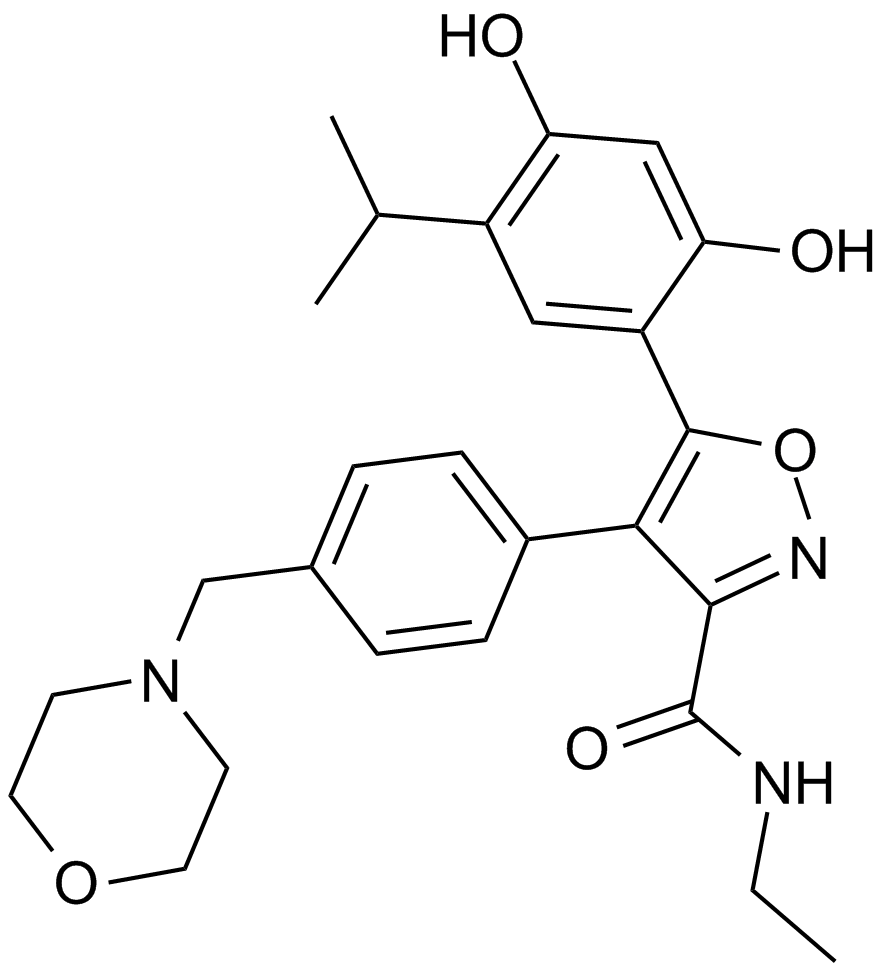
-
GC42878
Avanafil metabolite M16
Avanafil metabolite M16 is a major inactive metabolite of the phosphodiesterase 5 (PDE5) inhibitor avanafil.
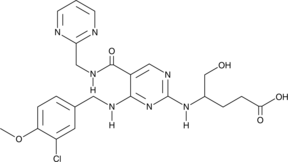
-
GC42879
Avanafil metabolite M4
Avanafil metabolite M4 is a major active metabolite of the phosphodiesterase 5 (PDE5) inhibitor avanafil.
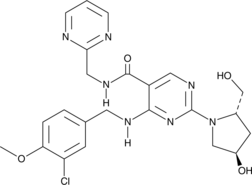
-
GC10999
Avasimibe
Cl-1011, PD-148515
An ACAT inhibitor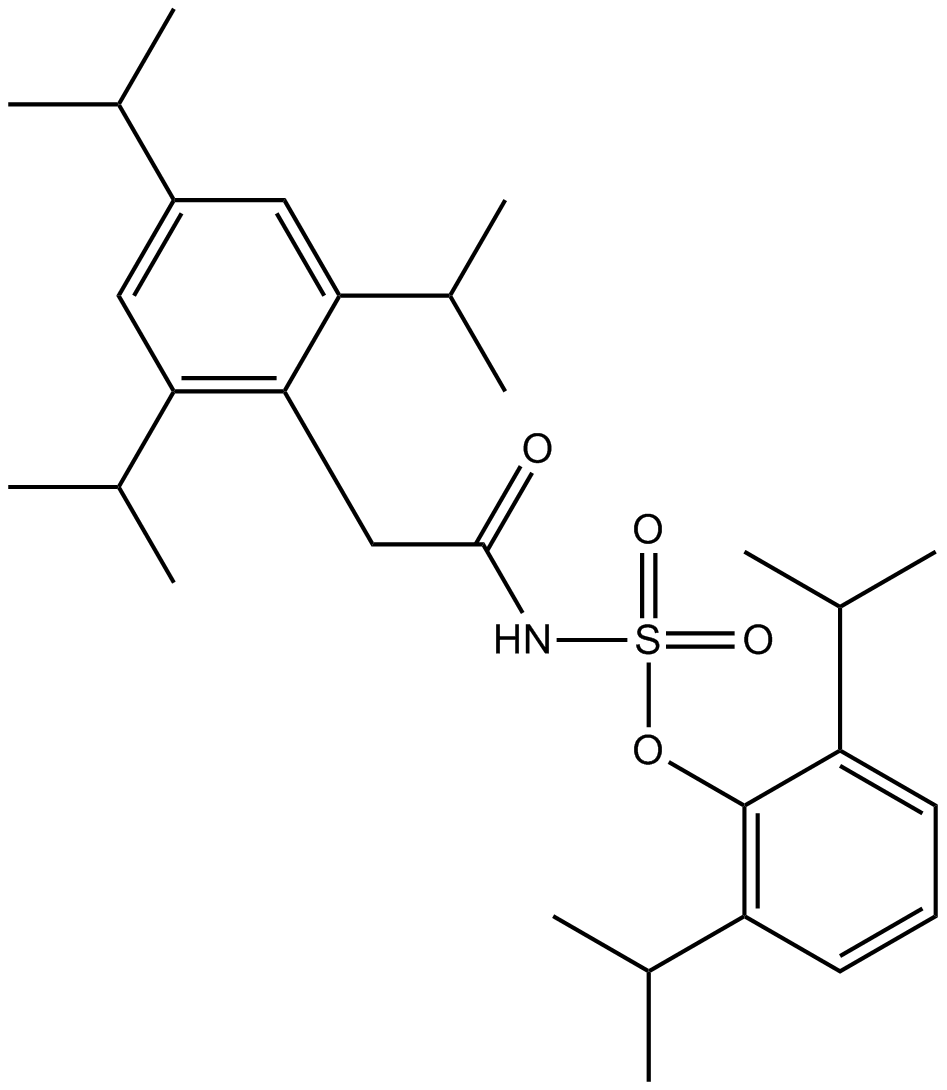
-
GC40677
Avenaciolide
(±)-Avenaciolide
Avenaciolide est un bis-γ-lactone antifongique trouvé dans Aspergillus avenaceus.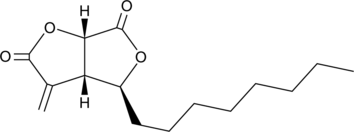
-
GC42887
Axitinib Sulfoxide
Axitinib sulfoxide is a major inactive metabolite of the tyrosine kinase inhibitor axitinib.
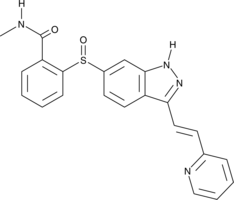
-
GC13171
AZ 10417808
Caspase-3 inhibitor,selective non-peptide

-
GC33072
AZ7550
L'AZ7550 est un métabolite actif de l'AZD9291 et inhibe l'activité de l'IGF1R avec une IC50 de 1,6 μM.
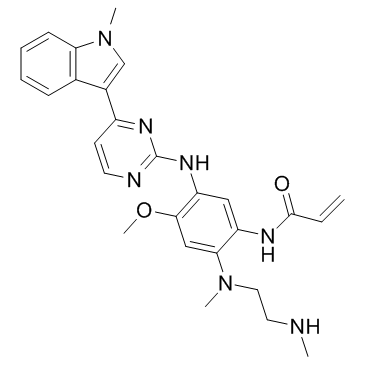
-
GC34287
AZ7550 hydrochloride
Le chlorhydrate d'AZ7550 est un métabolite actif de l'AZD9291 et inhibe l'activité de l'IGF1R avec une IC50 de 1,6 μM.
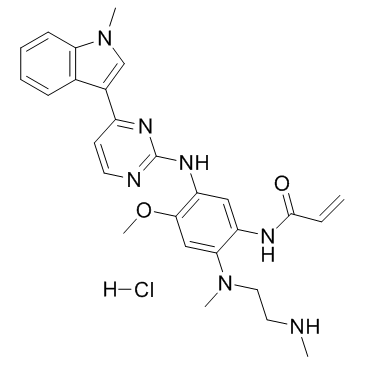
-
GC34414
AZ7550 Mesylate (AZ7550 trimesylate salt)
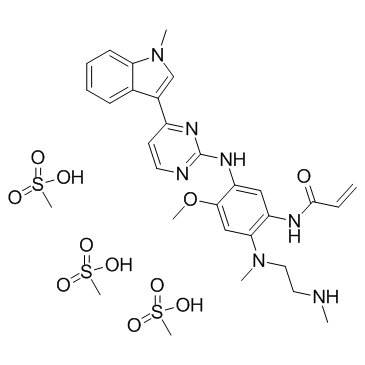
-
GC11843
Azaguanine-8
L'azaguanine-8 est un analogue purique qui présente une activité antinéoplasique. L'azaguanine-8 fonctionne comme un antimétabolite et s'incorpore facilement dans les acides ribonucléiques, interférant avec les voies de biosynthèse normales, inhibant ainsi la croissance cellulaire.
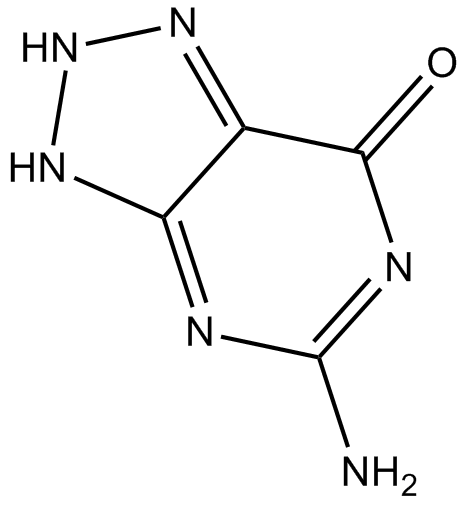
-
GC60613
Azaleatin
L'azaléatine est un flavonol O-méthylé isolé des espèces de Rhododendron.
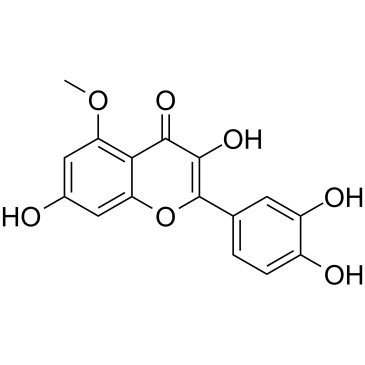
-
GC16257
AZD 3988
AZD 3988 est un inhibiteur de la diacylglycérol acyl transférase-1 (DGAT-1) actif par voie orale.
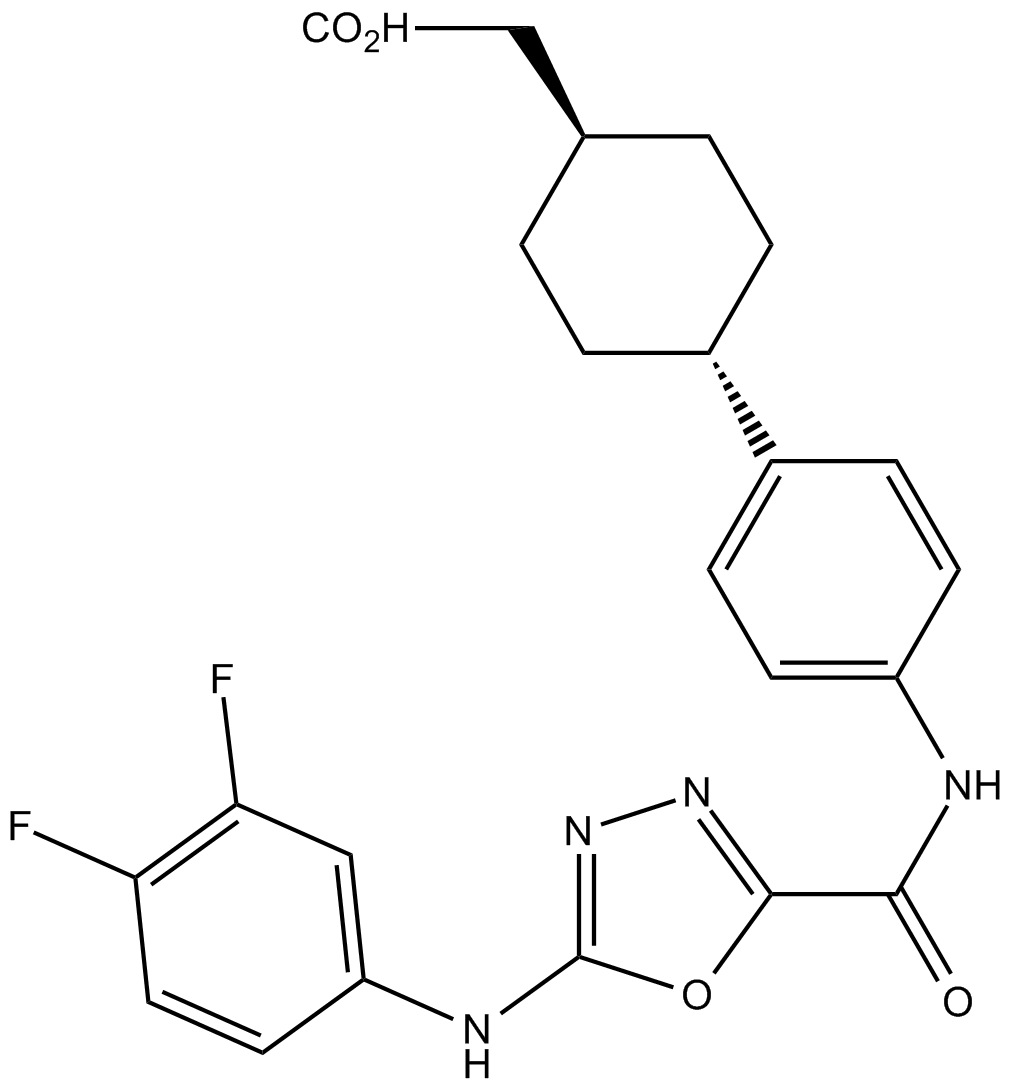
-
GC32035
AZD 4407 (ZD 4407)
ZD 4407
AZD 4407 (ZD 4407) est un puissant inhibiteur de la 5-lipoxygénase.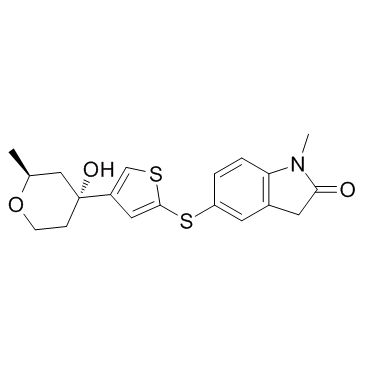
-
GC30783
AZD5904
AZD5904 est un inhibiteur sélectif et irréversible de la myéloperoxydase humaine (MPO) avec une IC50 de 140 nM et a une puissance similaire chez la souris et le rat.
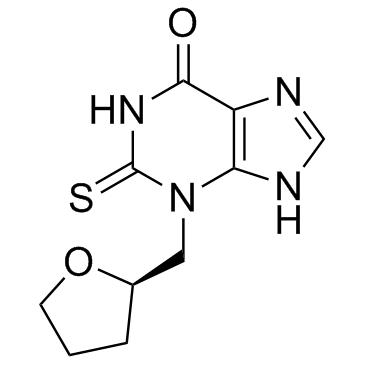
-
GC11475
AZD7687
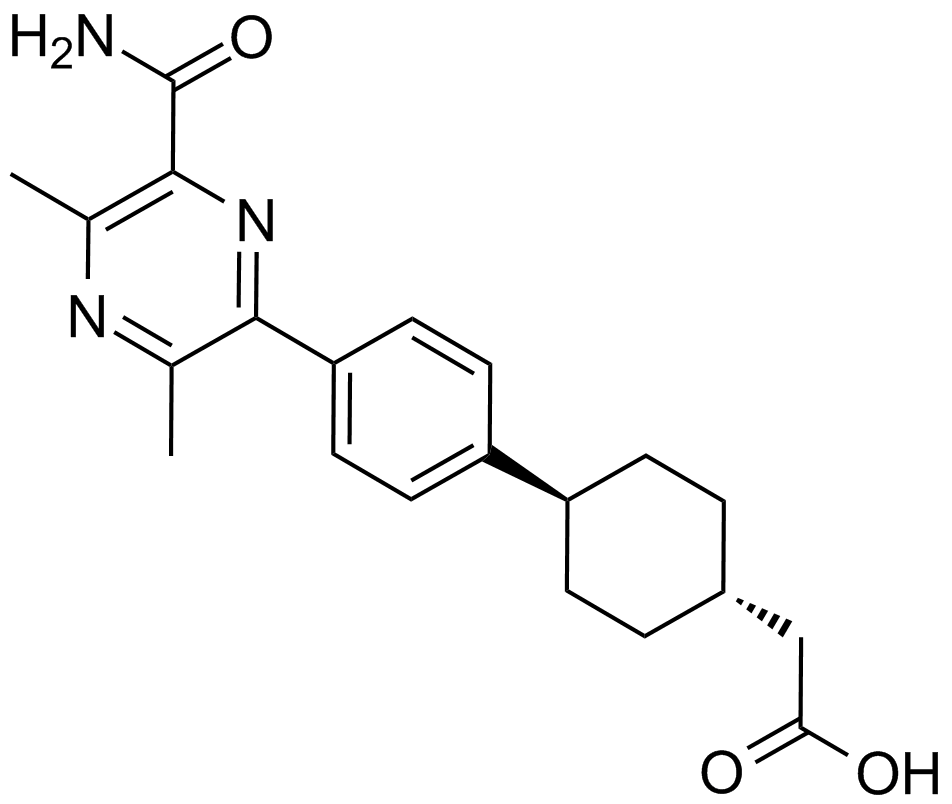
-
GC19052
AZD7986
Brensocatib; INS 1007
AZD7986 (AZD7986) est un inhibiteur oral de la dipeptidyl peptidase 1 (DPP1) avec des pIC50 de 6,85, 7,6, 7,7, 7,8 et 7,8 chez l'homme, la souris, le rat, le chien et le lapin, respectivement.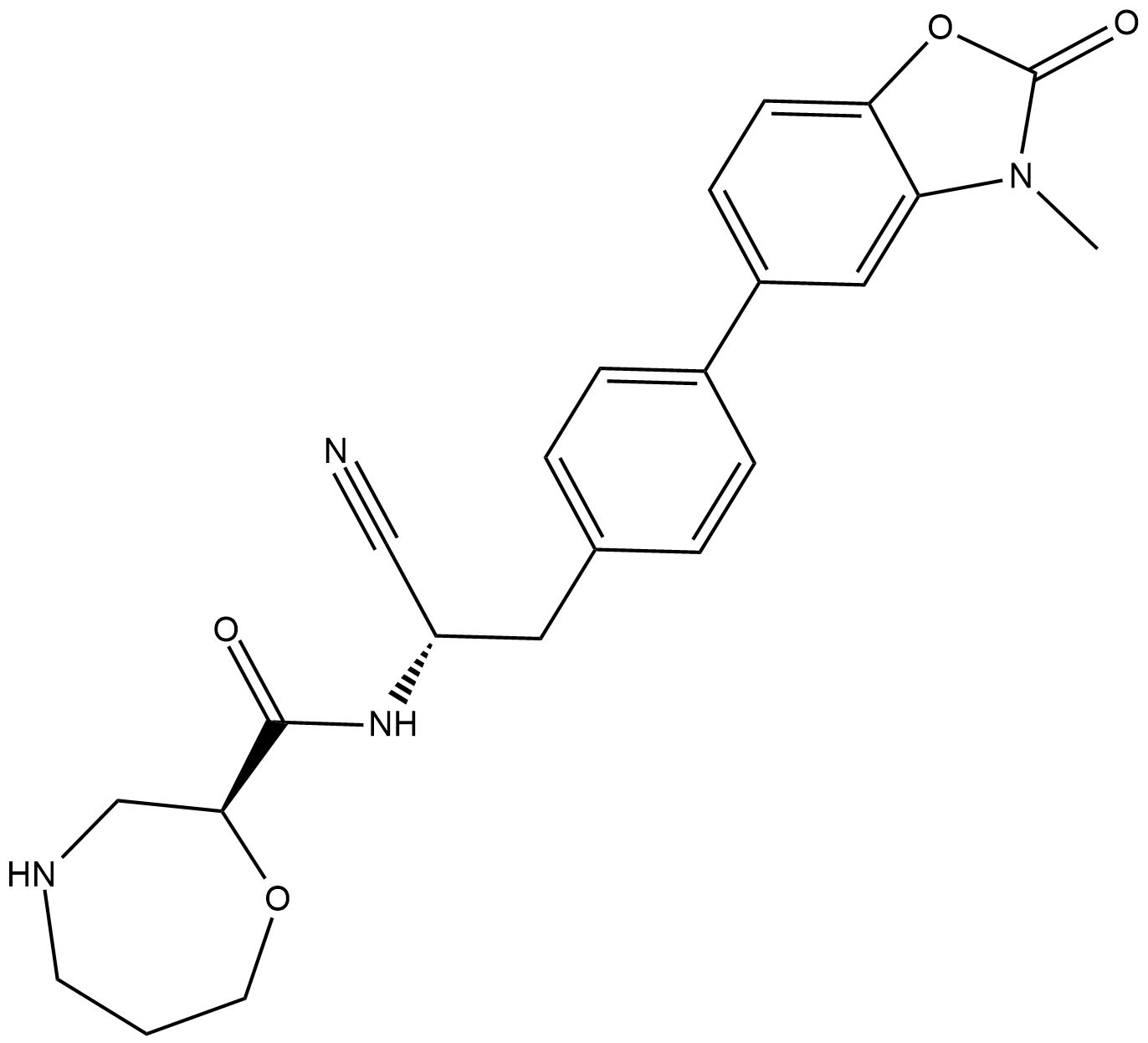
-
GC30219
Azelaic acid (Nonanedioic acid)
NSC 19493
L'acide azélaÏque (acide nonanedioÏque) est un composé organique produit par l'ozonolyse de l'acide oléique ; composant d'un certain nombre de revitalisants pour les cheveux et la peau.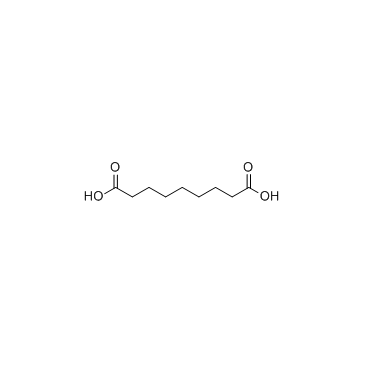
-
GC25117
Azvudine
RO-0622
Azvudine (RO-0622) is a novel nucleoside reverse transcriptase inhibitor with antiviral activity against human immunodeficiency virus (HIV), hepatitis B virus (HBV) and hepatitis C virus (HCV), potently inhibits HIV-1 (EC50 range 0.03 to 6.92 nM) and HIV-2 (EC50s ranging from 0.018 to 0.025 nM).
-
GC18580
B355252
Le B355252, une petite molécule de phénoxy thiophène sulfonamide, est un puissant agoniste des récepteurs du NGF.
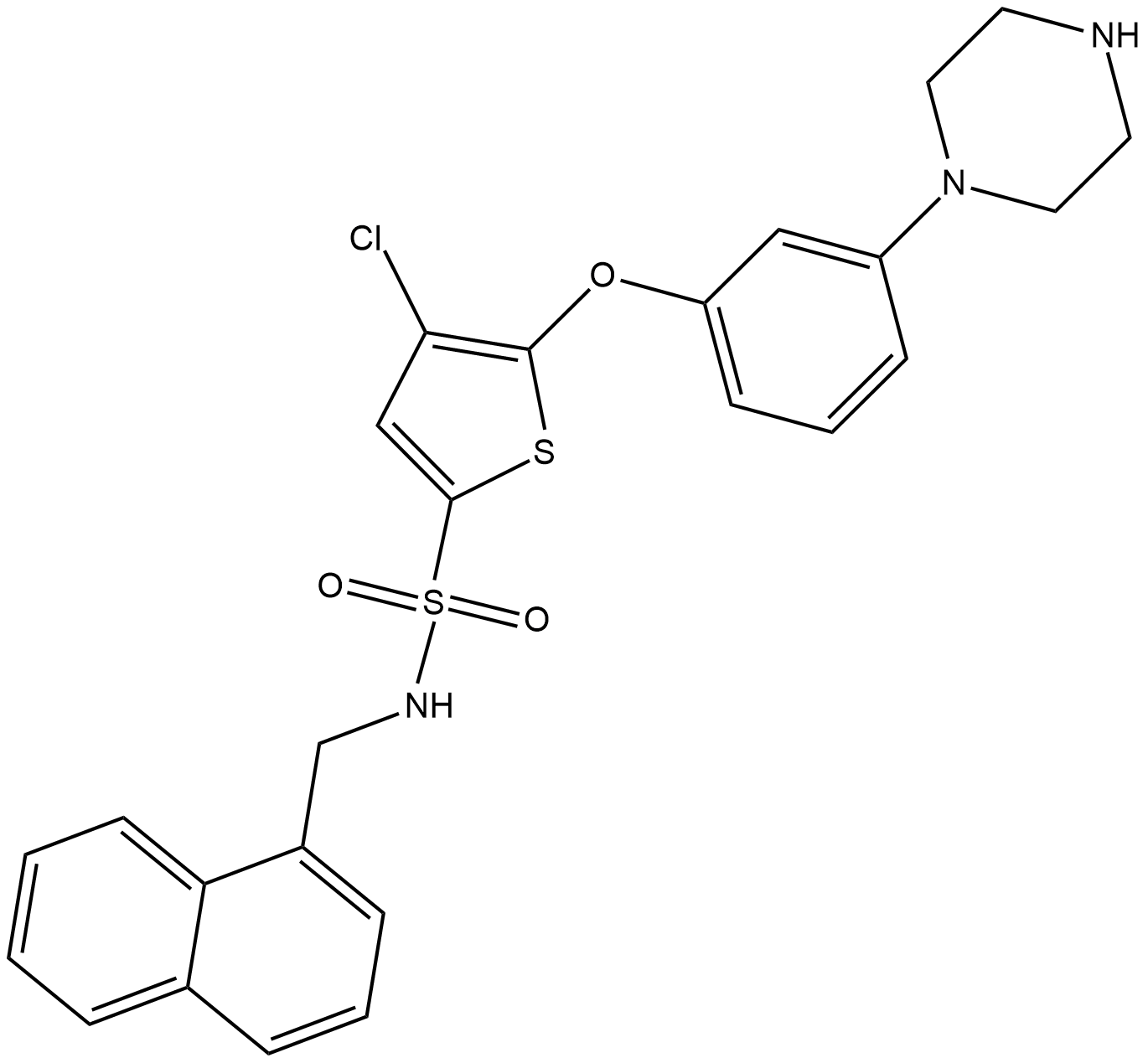
-
GN10158
Baicalein
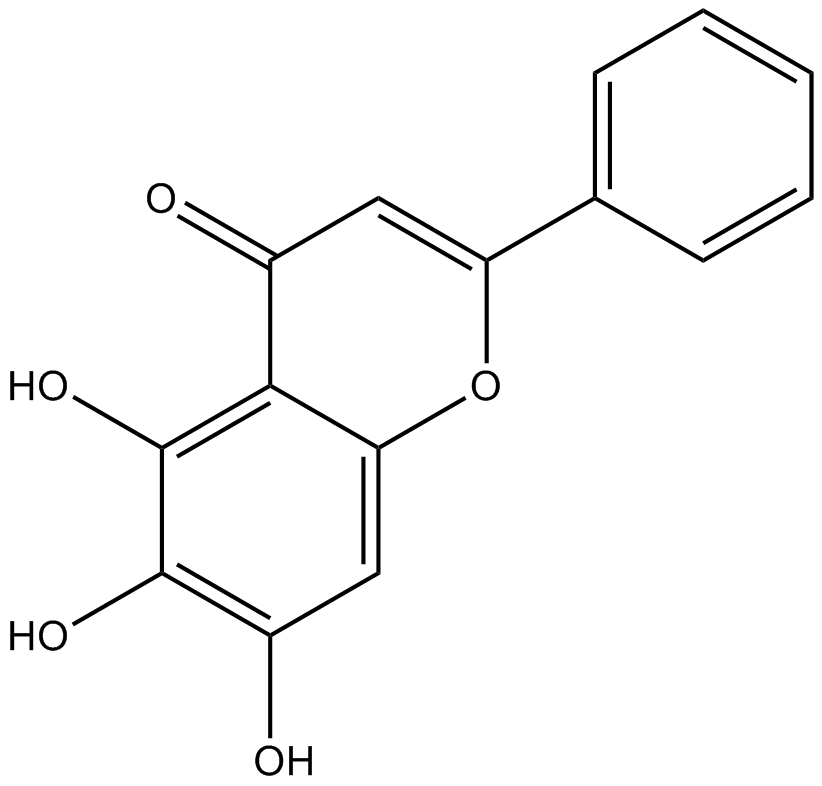
-
GC10930
Balapiravir
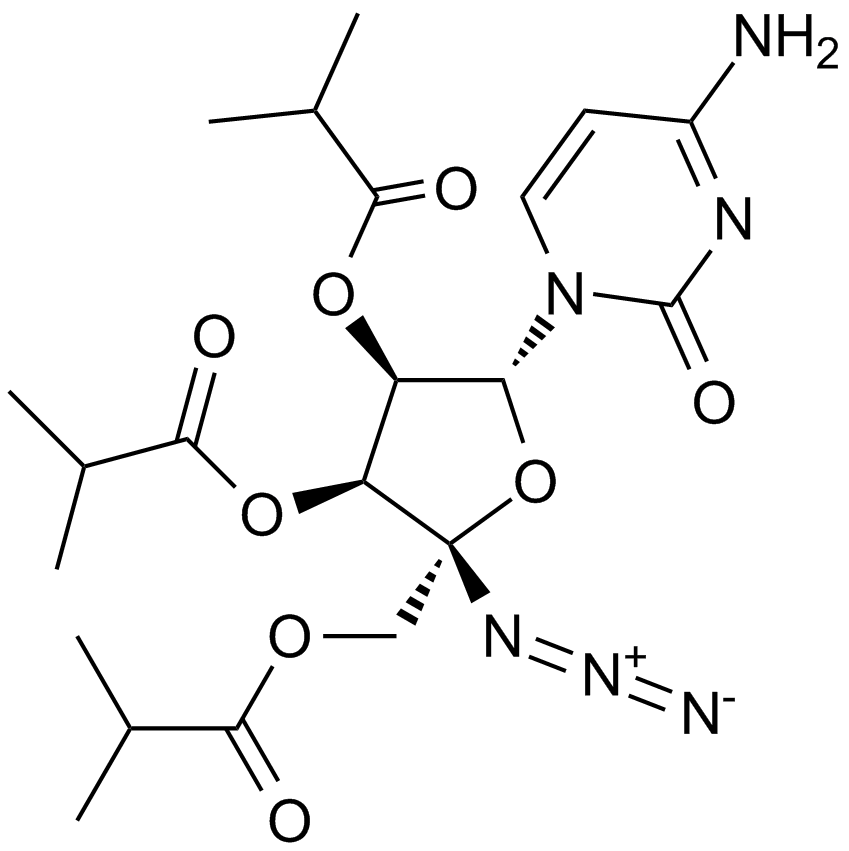
-
GC12751
Balicatib
AAE581
Le balicatib (AAE581) est un inhibiteur puissant, actif par voie orale et sélectif de la cathepsine K avec des valeurs IC50 de 22, 61, 48, 2900 nM pour la cathepsine K, la cathepsine B, la cathepsine L, la cathepsine S, respectivement.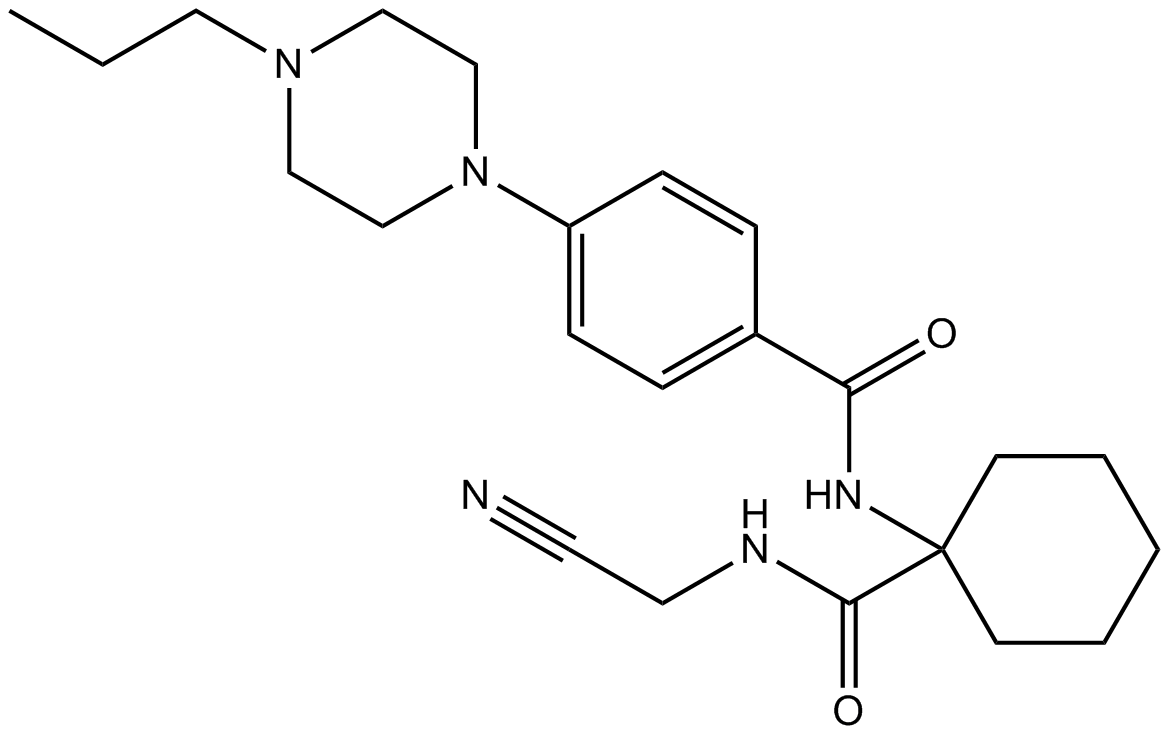
-
GC38143
Batilol
Le 3-(octadécyloxy)propane-1,2-diol est un métabolite endogène.
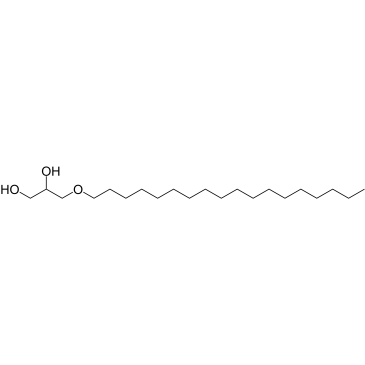
-
GC16530
Batimastat (BB-94)
BB-94
A potent broad spectrum inhibitor of MMPs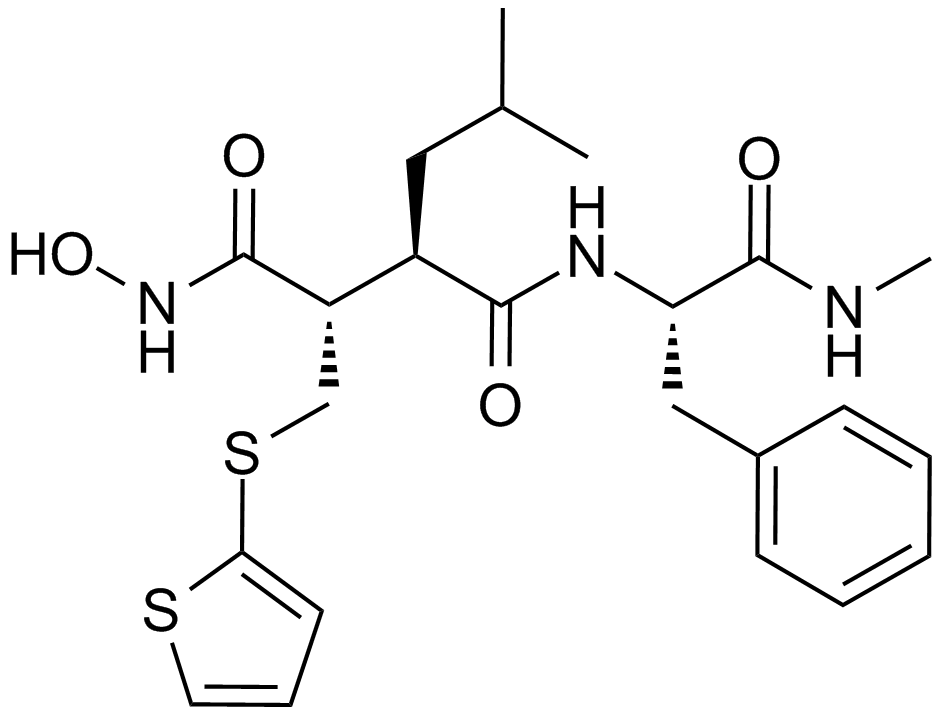
-
GC35470
Batimastat sodium salt
Le sel de sodium du batimastat est un puissant inhibiteur de MMP À large spectre avec une IC50 de 3, 4, 4, 6 et 20 nM pour MMP-1, MMP-2, MMP-9, MMP-7 et MMP-3, respectivement.
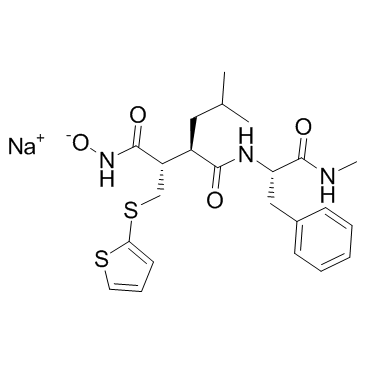
-
GC19059
BAY-1436032
BAY-1436032 est un nouvel inhibiteur pan-mutant de l'isocitrate déshydrogénase 1 (IDH1).
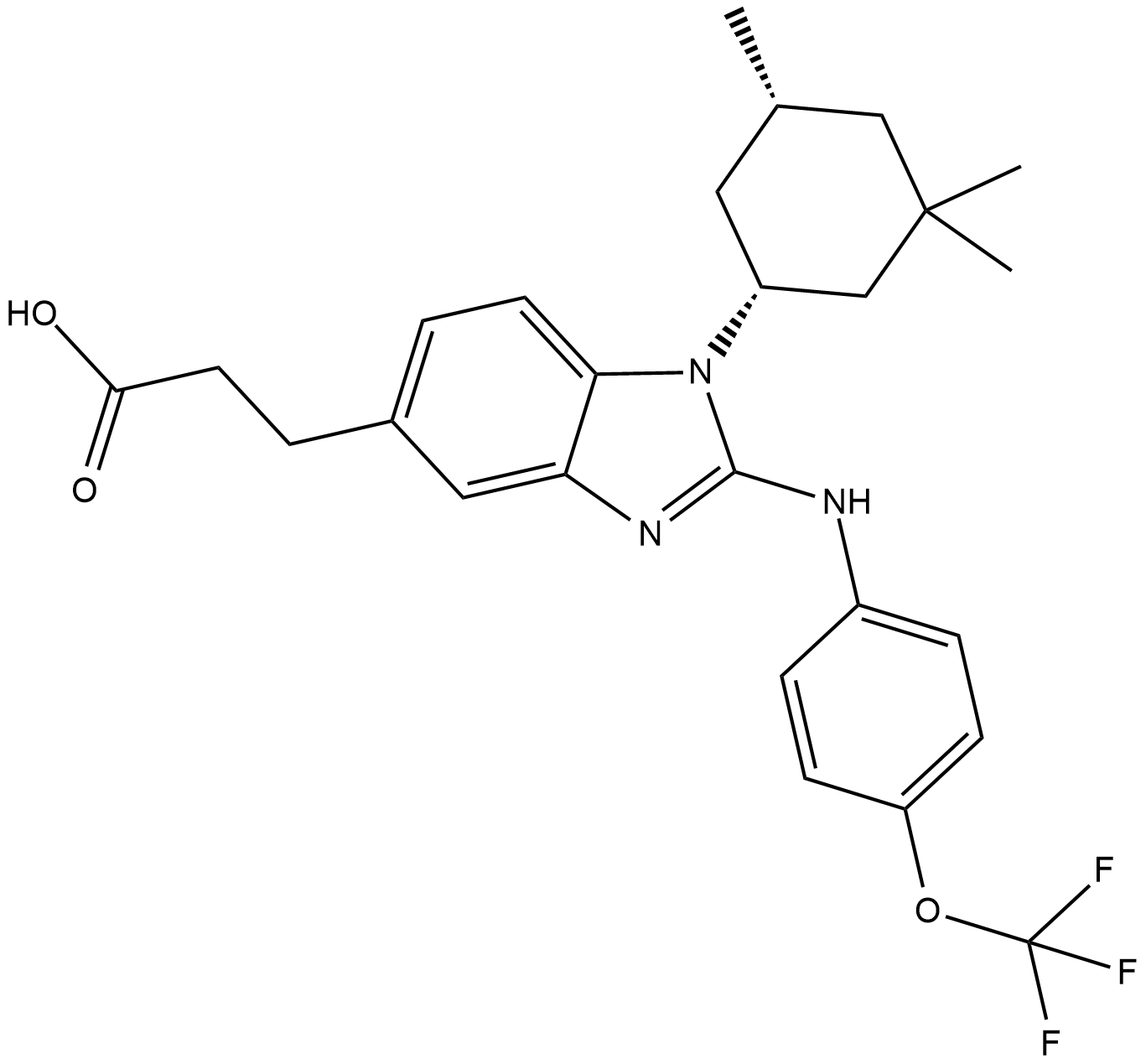
-
GC49901
BAY-179
BAY-179 est un inhibiteur puissant, sélectif et À réaction croisée du complexe I (IC50 = 79 μM).
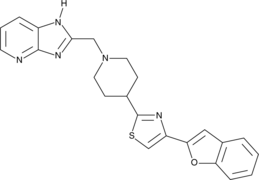
-
GC32838
BAY-2402234
BAY-2402234 est un inhibiteur sélectif de la dihydroorotate déshydrogénase (DHODH) pour le traitement des tumeurs malignes myéloÏdes.
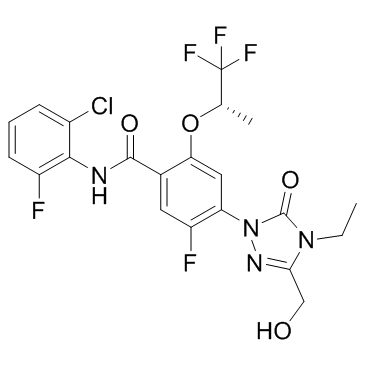
-
GC12088
BAY-678
BAY-678 est un inhibiteur de l'élastase neutrophile humaine (HNE) biodisponible par voie orale, très puissant, sélectif et perméable aux cellules, avec une IC50 de 20 nM.
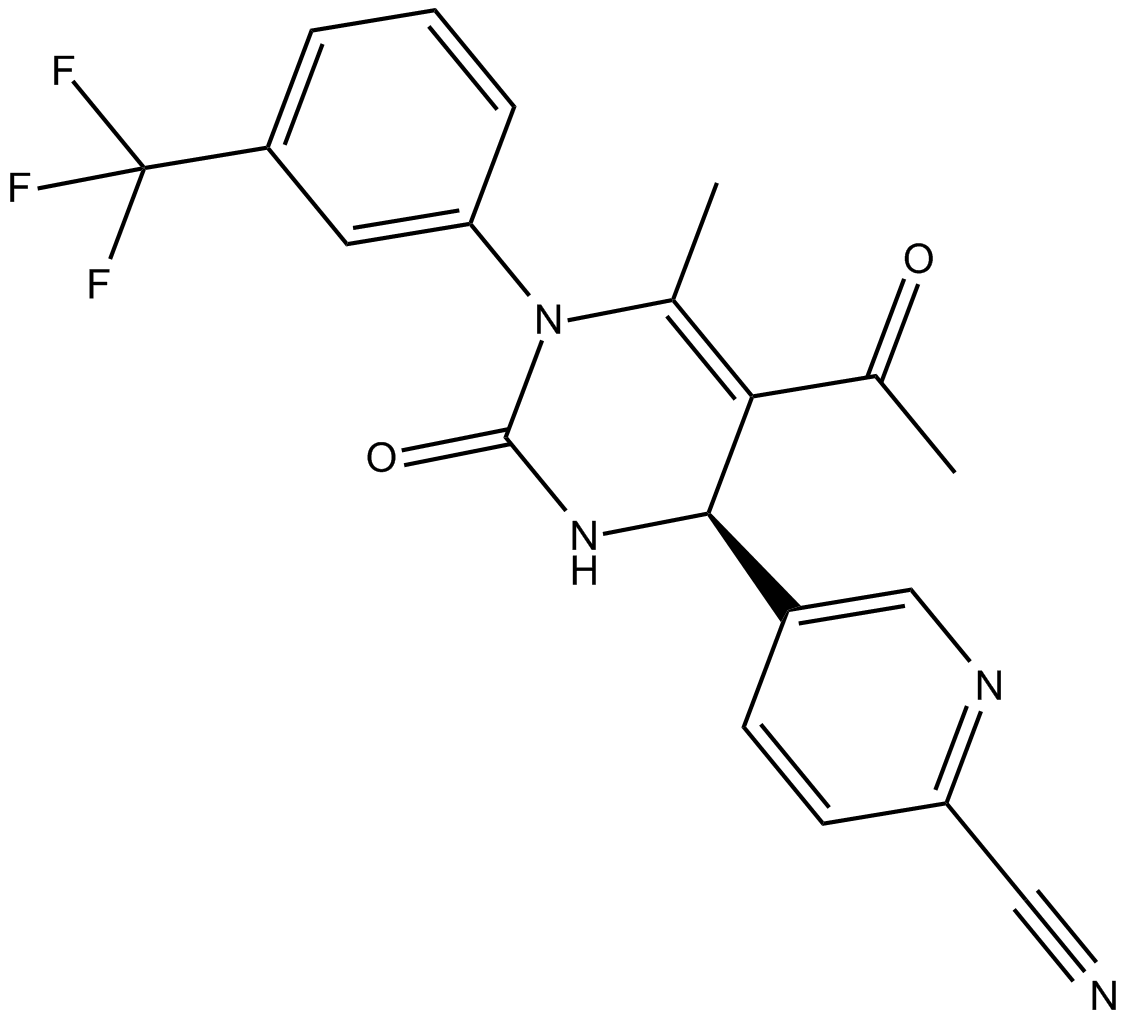
-
GC35476
BAY-678 racemate
Le racémate de BAY-678 est un racémate de BAY-678.
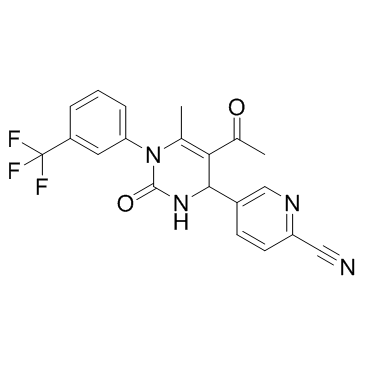
-
GC31564
BAY-85-8501
BAY-85-8501 est un inhibiteur sélectif, réversible et puissant de l'élastase neutrophile humaine (HNE), avec une IC50 de 65 pM.
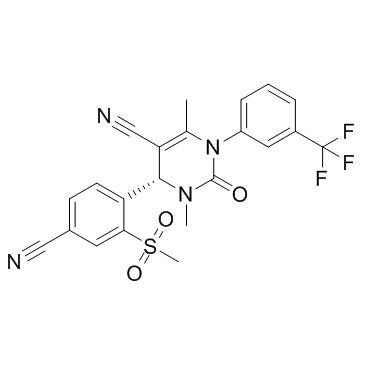
-
GC16844
BC 11 hydrobromide
Selective urokinase inhibitor
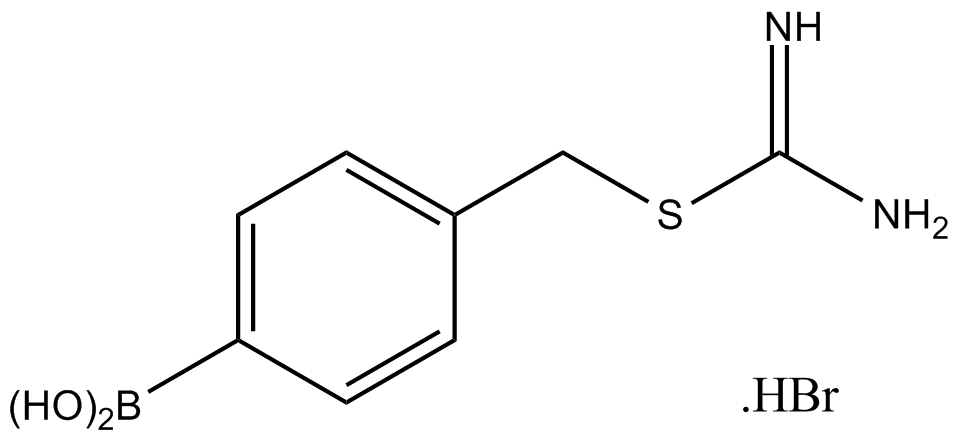
-
GC68150
BC-1382
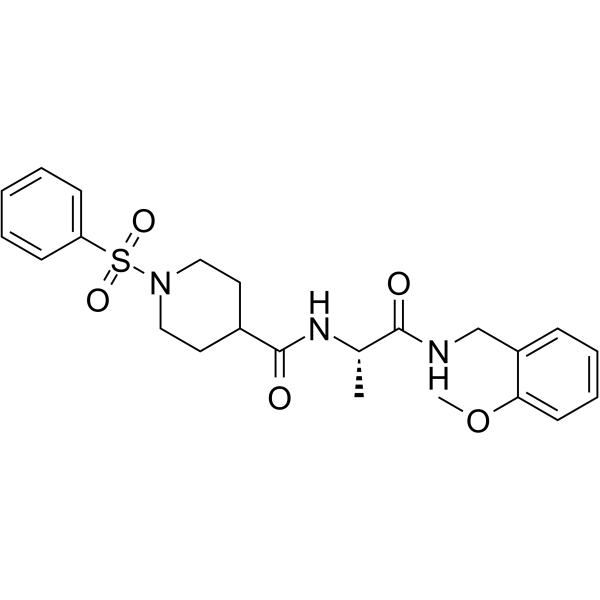
-
GC62135
BC1618
BC1618, un composé inhibiteur de Fbxo48 actif par voie orale, stimule la signalisation dépendante d'Ampk (en empêchant pAmpkα activé de la dégradation médiée par Fbxo48).
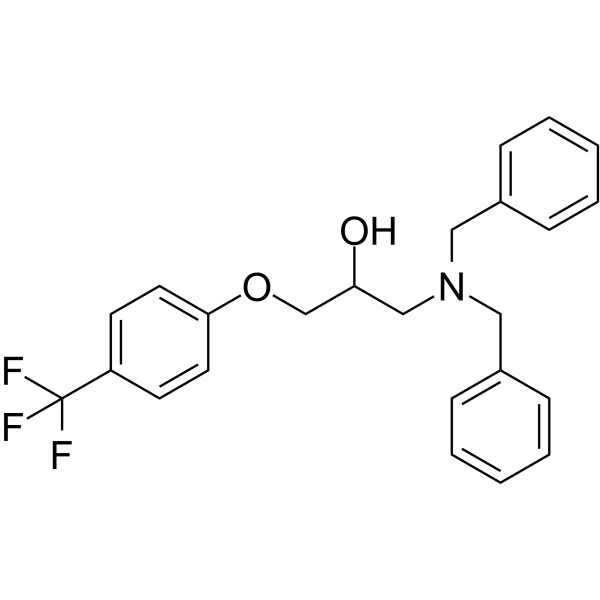
-
GC17342
Beauvericin
La beauvéricine est une mycotoxine de Fusarium.
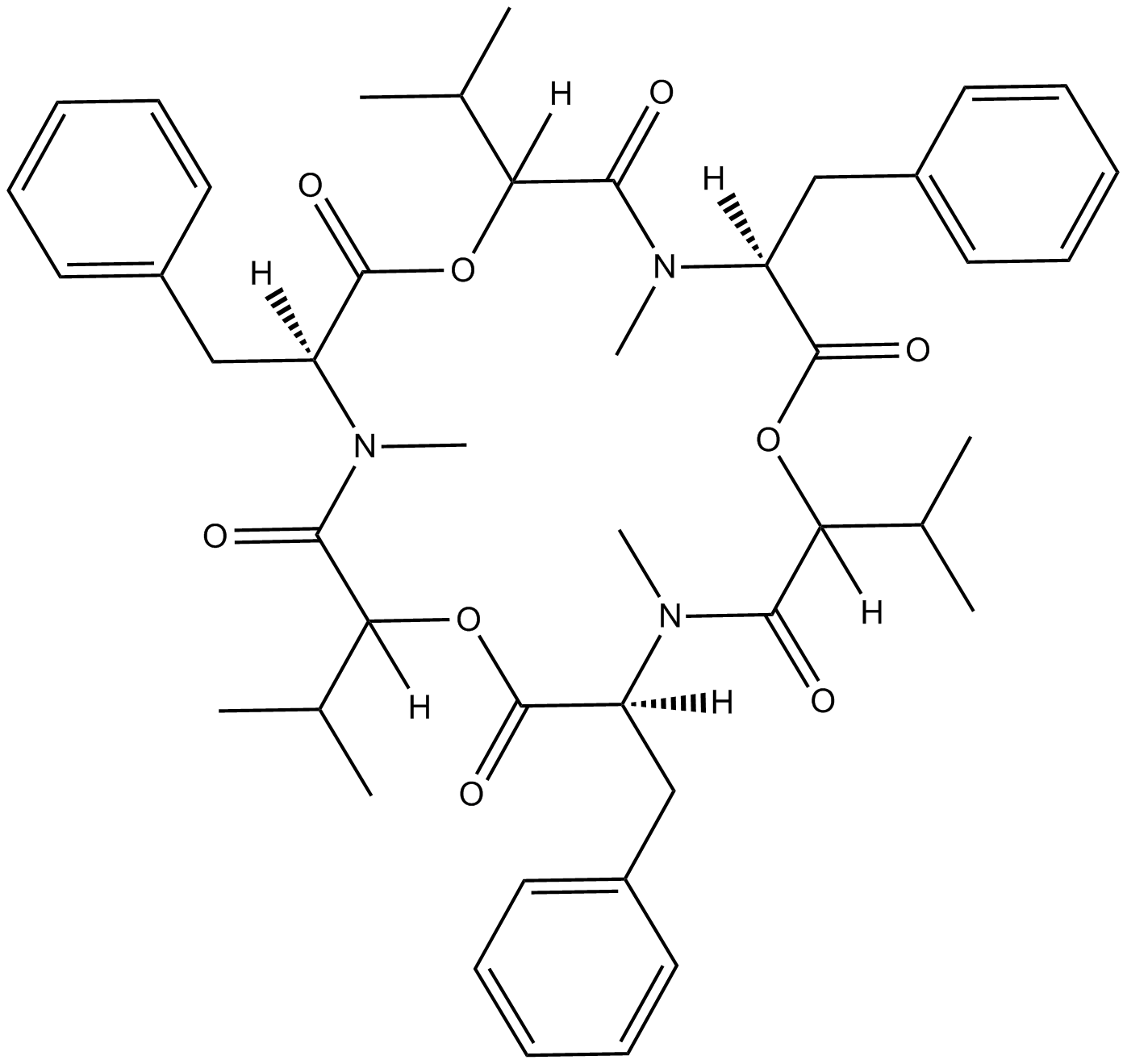
-
GC61536
Beclomethasone 17-propionate
Le 17-propionate de béclométhasone (17-monopropionate de béclométhasone), un métabolite actif du dipropionate de béclométhasone, est un agoniste des récepteurs des glucocorticoÏdes (RG).
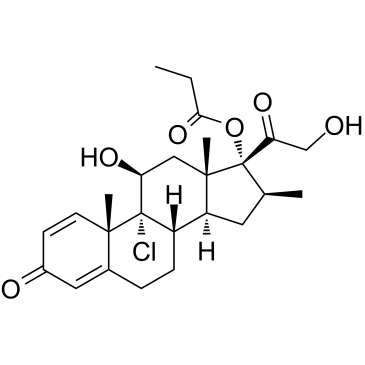
-
GC12659
Begacestat
GSI-953
An inhibitor of γ-secretase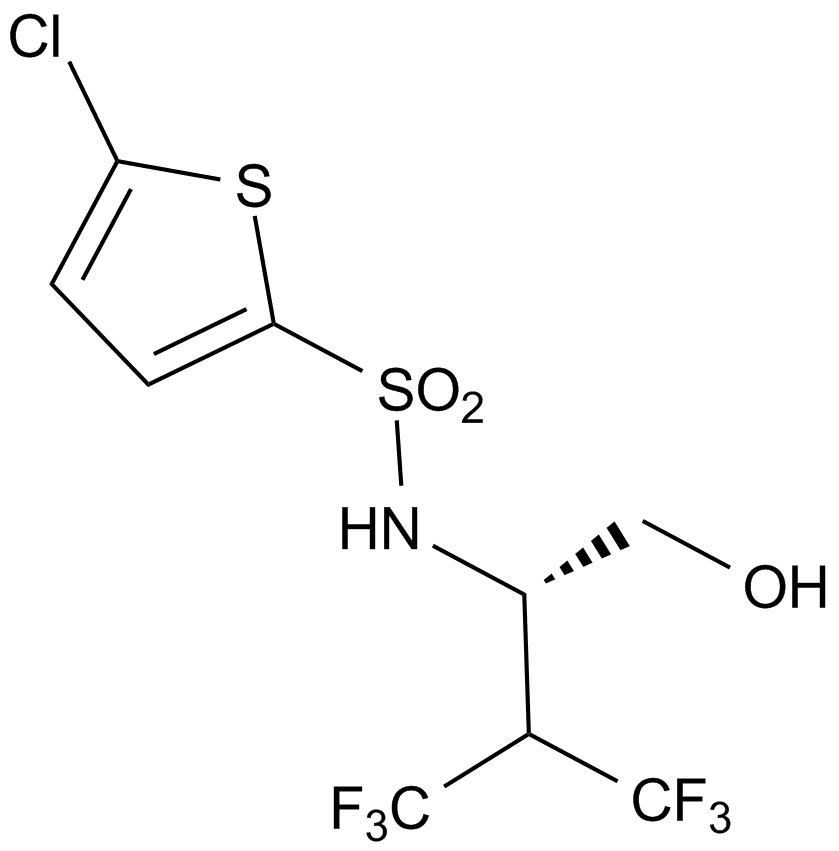
-
GC11228
Benazepril
Bénazépril, un inhibiteur de l'enzyme de conversion de l'angiotensine, qui est un médicament utilisé pour traiter l'hypertension artérielle.
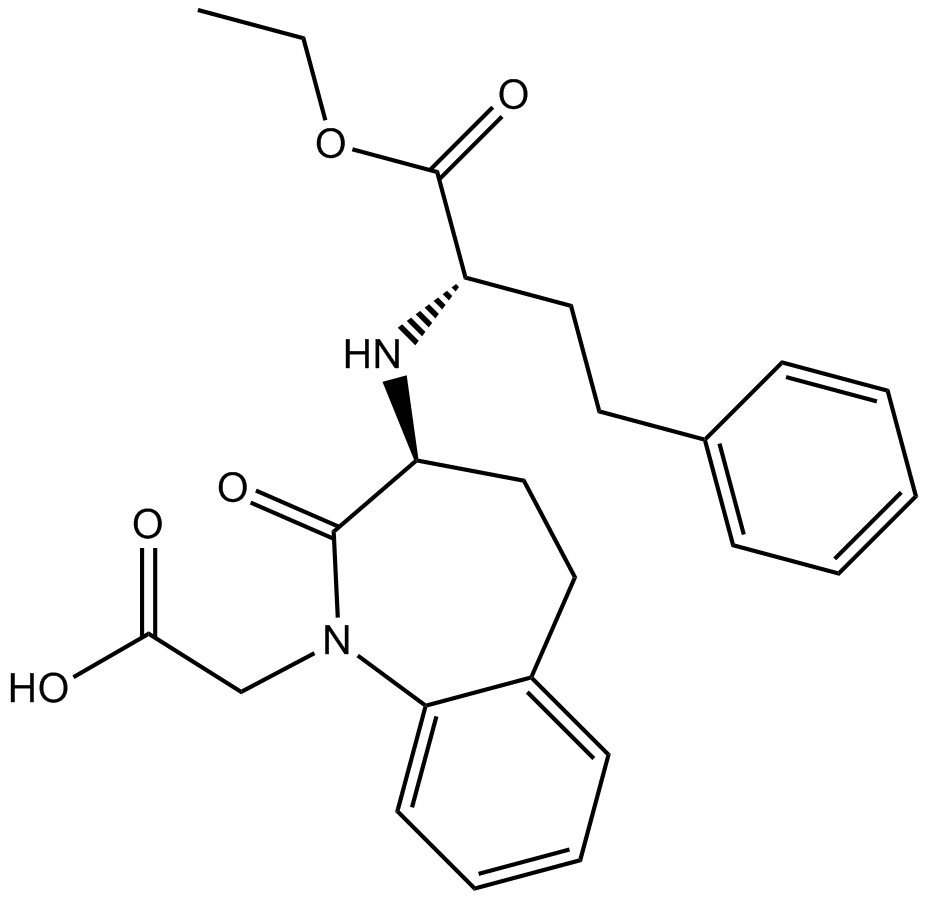
-
GC17941
Benazepril HCl
CGS 14824A
Benazepril HCl, un inhibiteur de l'enzyme de conversion de l'angiotensine, qui est un médicament utilisé pour traiter l'hypertension artérielle.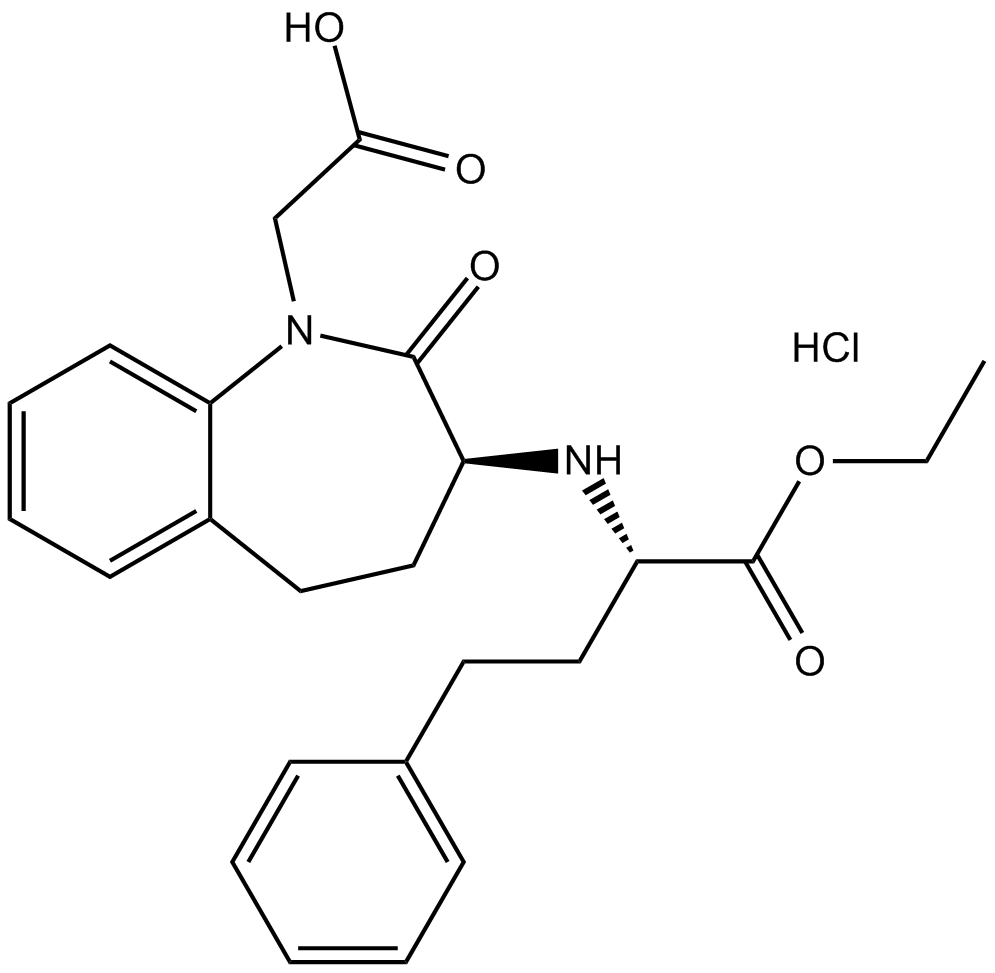
-
GC42913
Benazeprilat
CGS 14831
Le bénazéprilate est un médicament actif par voie orale et le métabolite actif du bénazépril, un inhibiteur de l'ECA contenant des groupes carboxyle ayant une activité antihypertensive.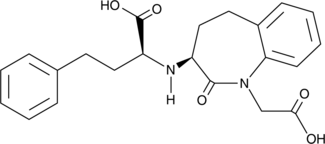
-
GC50134
Bengamide B
Potent inhibitor of NF-κB activation
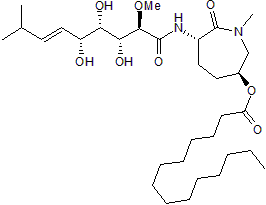
-
GC63577
Benzamide-15N
Le benzamide-15N (benzènecarboxamide-15N) est un benzamide marqué au 15N.
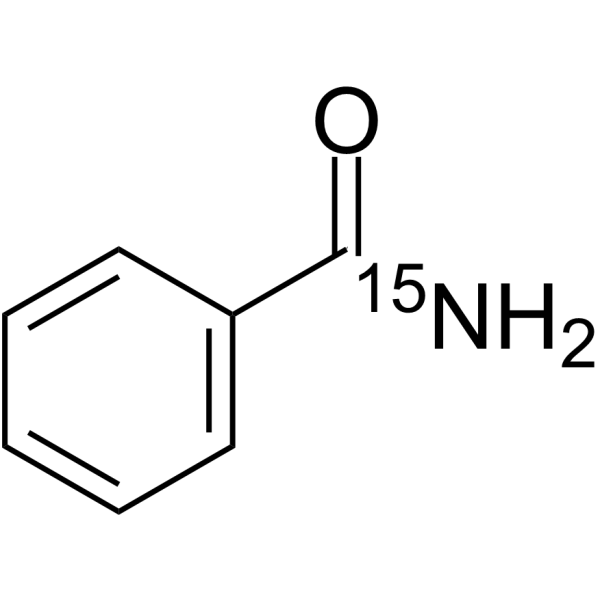
-
GC42915
Benzamidine (hydrochloride)
La benzamidine (chlorhydrate) est un inhibiteur compétitif réversible des protéases à sérine de type trypsine, avec un Kis de 97 µM, 21 µM, 20 µM et 110 µM pour l'uPA, la trypsine, la tryptase et le facteur Xa, respectivement.
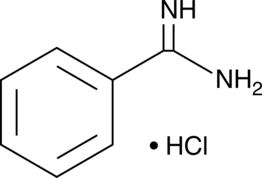
-
GC49403
Benzarone
L 2197, NSC 82134
Benzarone (Fragivix) est un puissant inhibiteur du transporteur 1 de l'acide urique humain (hURAT1), avec une IC50 de 2,8 μM dans l'ovocyte.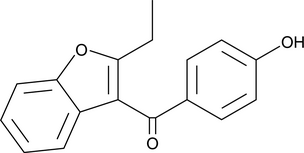
-
GC14930
Benzbromarone
MJ10061, NSC 85433
La benzbromarone est un inhibiteur non compétitif très efficace et bien toléré de la xanthine oxydase, utilisé comme agent uricosurique, utilisé dans le traitement de la goutte.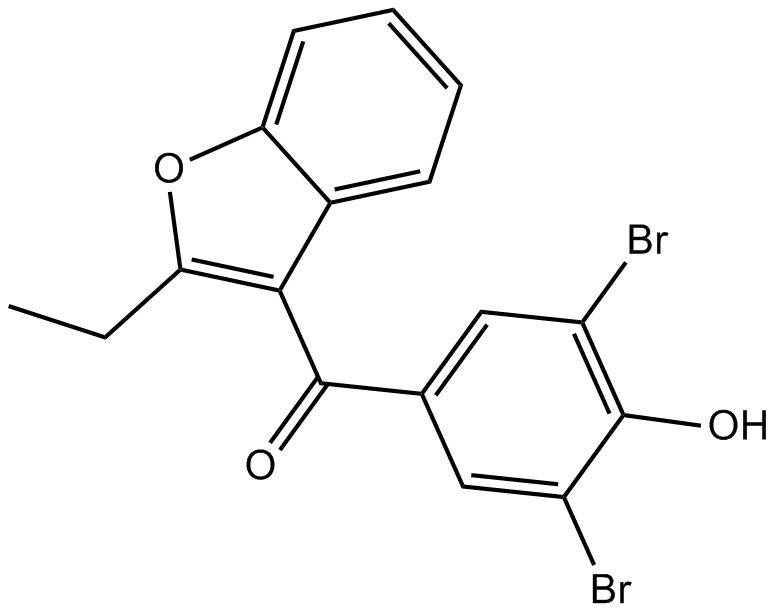
-
GC41532
Benzisoxazole Hsp90 Inhibitor
BHI
Heat shock protein 90 (Hsp90) is a molecular chaperone that modulates intracellular signaling and protein folding, trafficking, and turnover.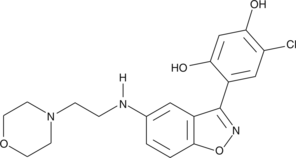
-
GC65332
Benzoic acid-13C6
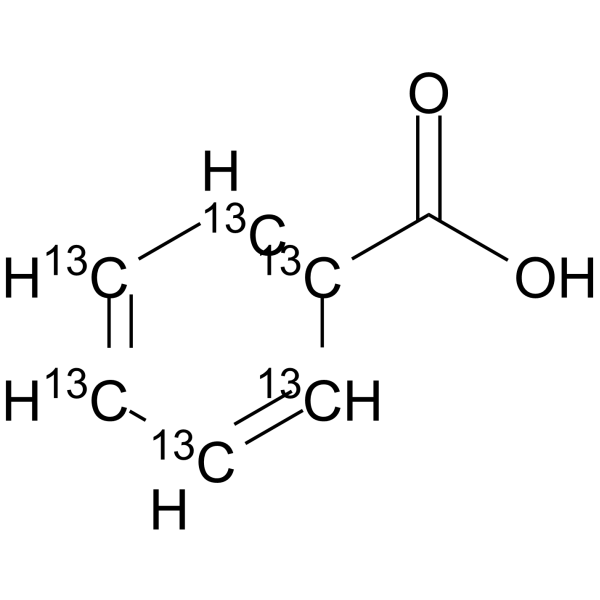
-
GC60633
Benzophenone
La benzophénone est un métabolite endogène.
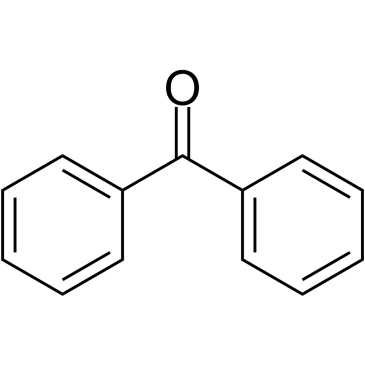
-
GC49318
Benzovindiflupyr
A fungicide
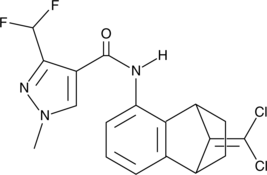
-
GC35494
Benzoyloxypaeoniflorin
La benzoyloxypaeoniflorine, isolée de la racine de Paeonia suffruticosa, est un inhibiteur de tyrosinase contre la tyrosinase de champignon avec une IC50 de 0,453 mM.
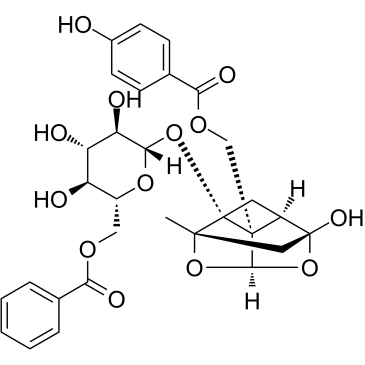
-
GC60640
Benzylideneacetone
La benzylidèneacétone est un métabolite endogène.
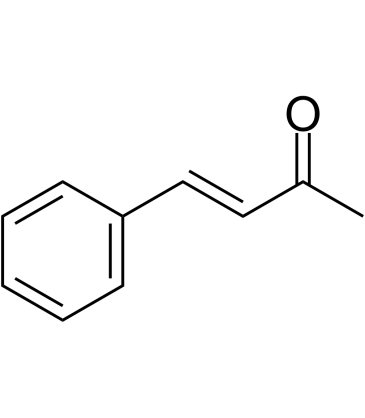
-
GC67751
Berotralstat dihydrochloride
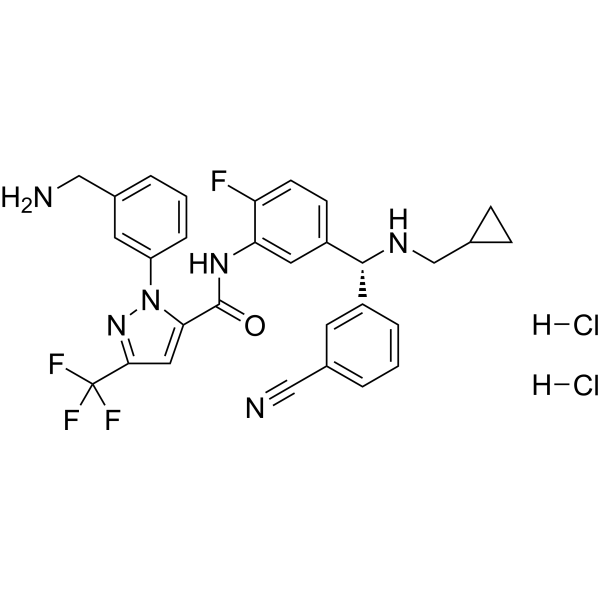
-
GC11780
Bestatin
NK 421, NSC 265489
An aminopeptidase inhibitor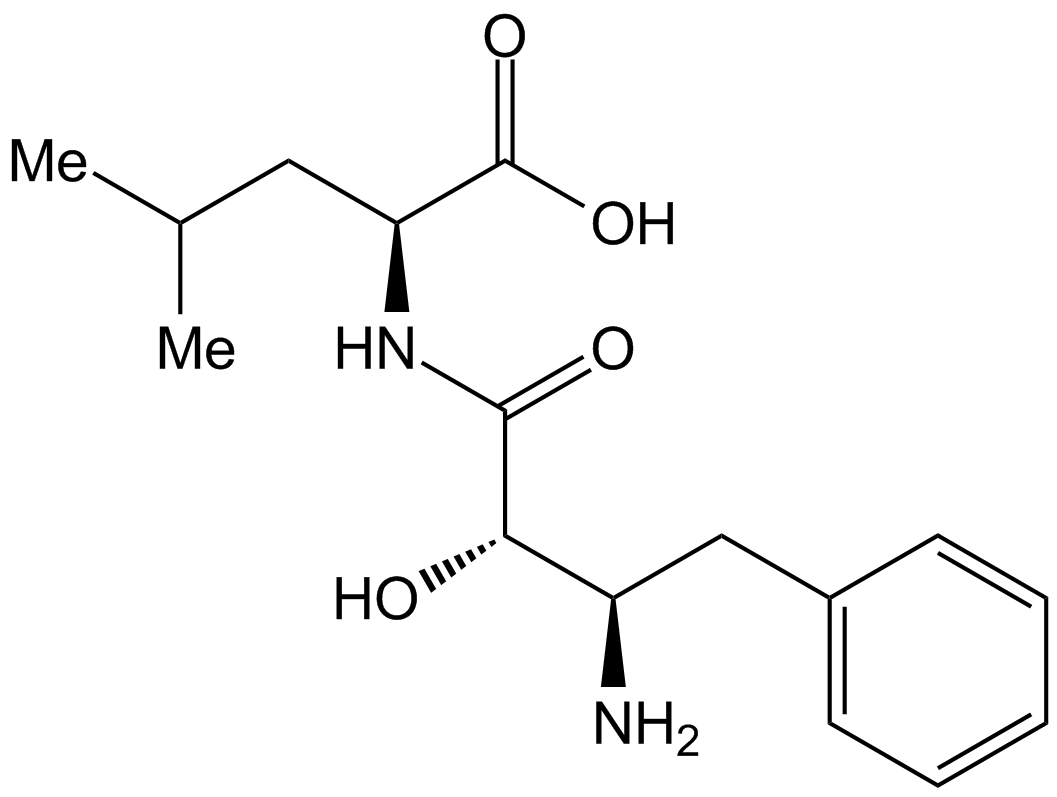
-
GC15577
Bestatin hydrochloride
Le chlorhydrate de bestatine est un inhibiteur du CD13 (aminopeptidase N)/APN et de la leucotriène A4 hydrolase, utilisé pour la recherche sur le cancer.
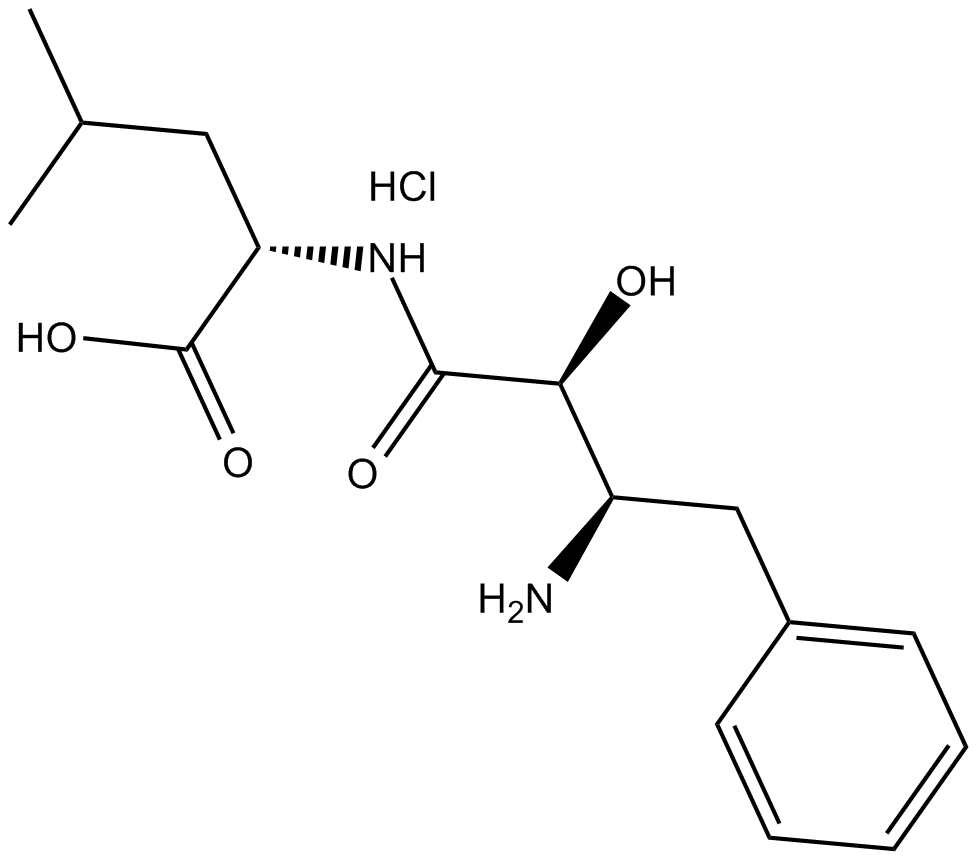
-
GC35499
Bestatin trifluoroacetate
Le trifluoroacétate de bestatine est un inhibiteur du CD13 (Aminopeptidase N)/APN et de la leucotriène A4 hydrolase, utilisé pour la recherche sur le cancer.
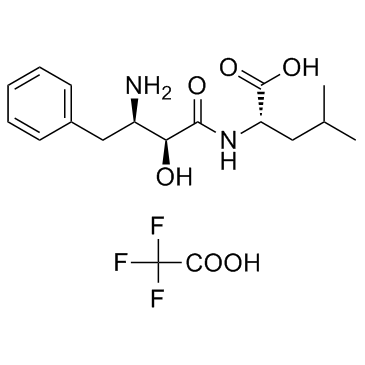
-
GC30727
Beta-Cortol
NSC 58792
Le bêta-cortol est un métabolite androgène présent chez l'adulte.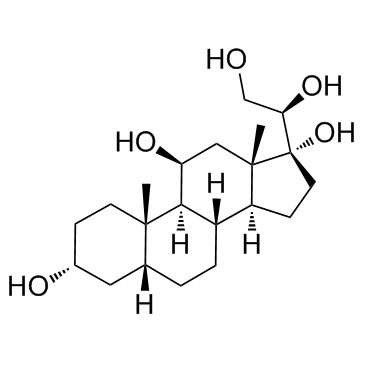
-
GC19134
beta-D-(-)-Arabinose
D-(–)-Arabinose
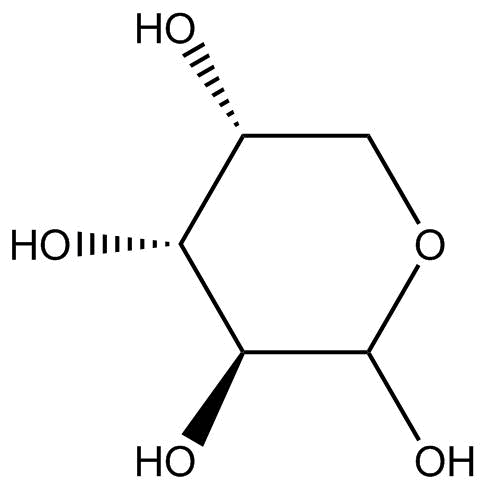
-
GC10582
Betacarotene
Food Orange 5, KPMK, Lucarotin, NSC 62794, Provatene, Provitamin A, Solatene
Le bêtacarotène (provitamine A), un composé caroténoÏde, est un précurseur naturel de la vitamine A.